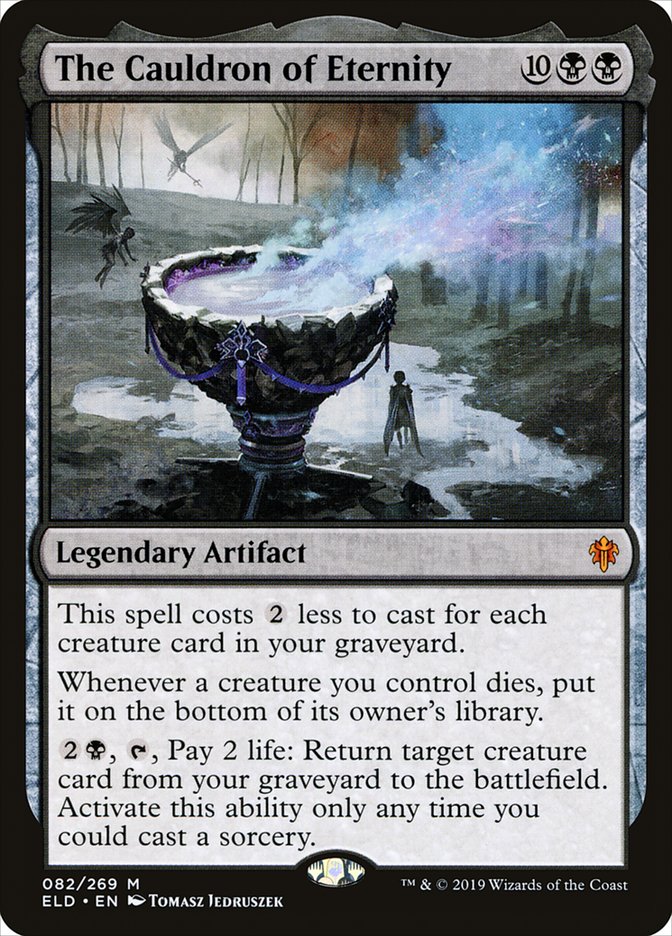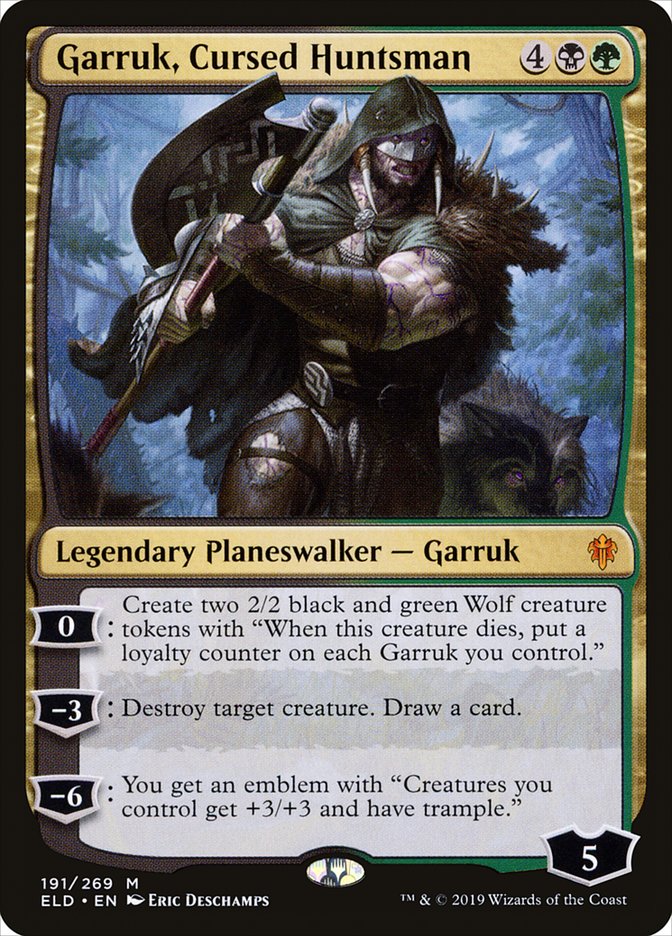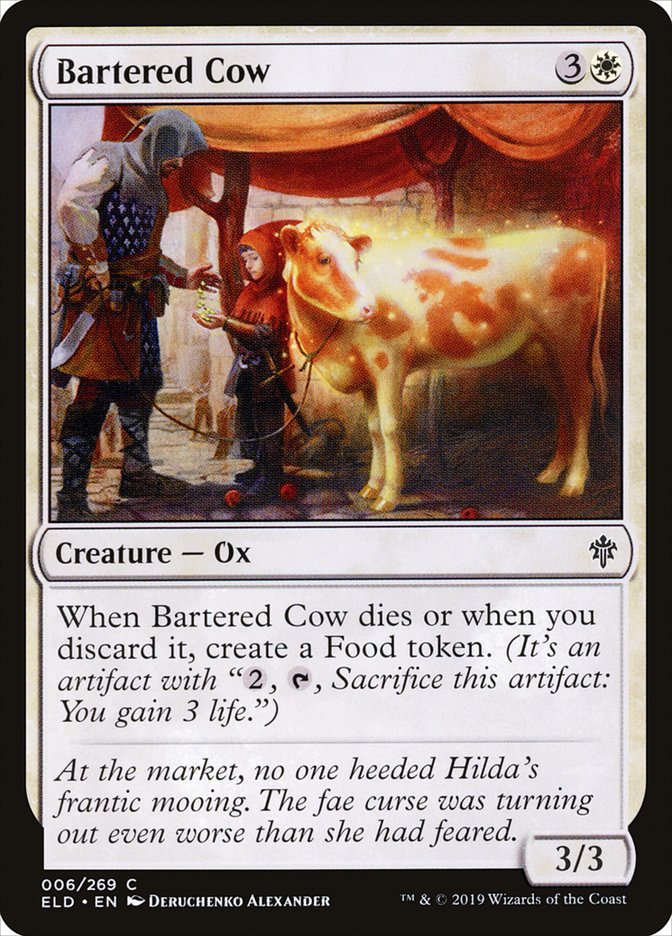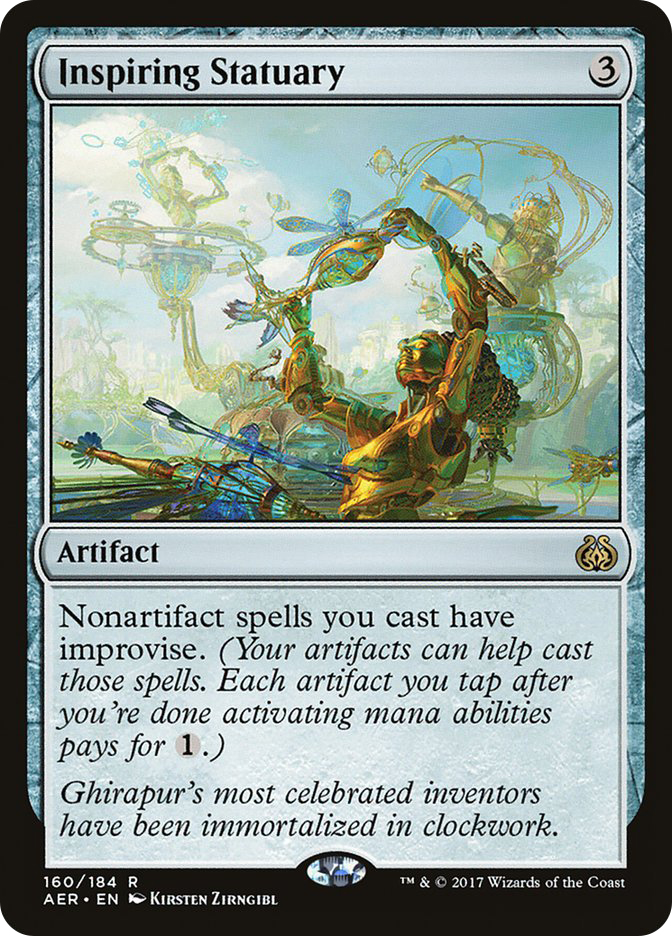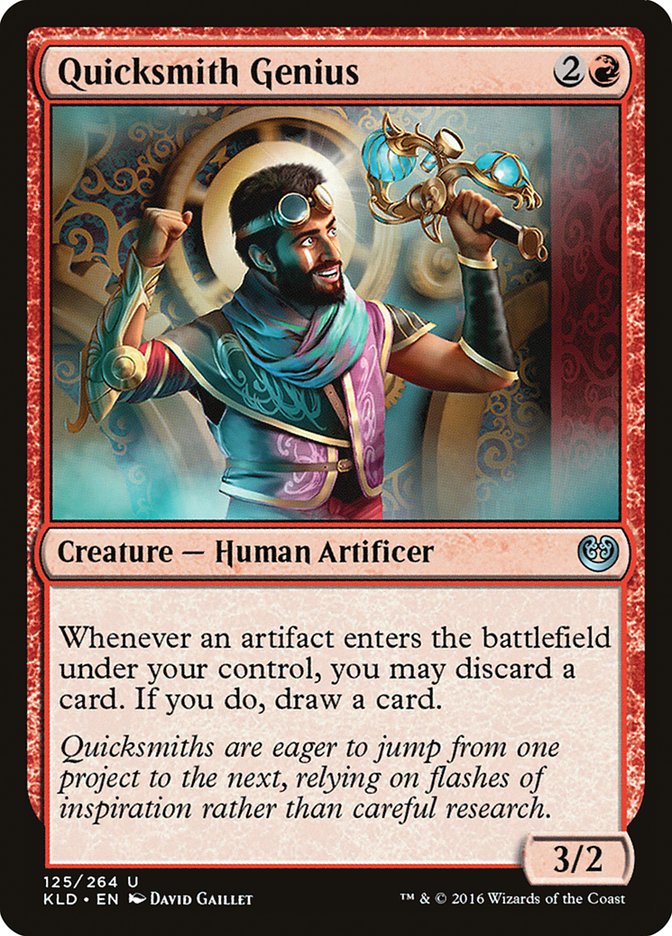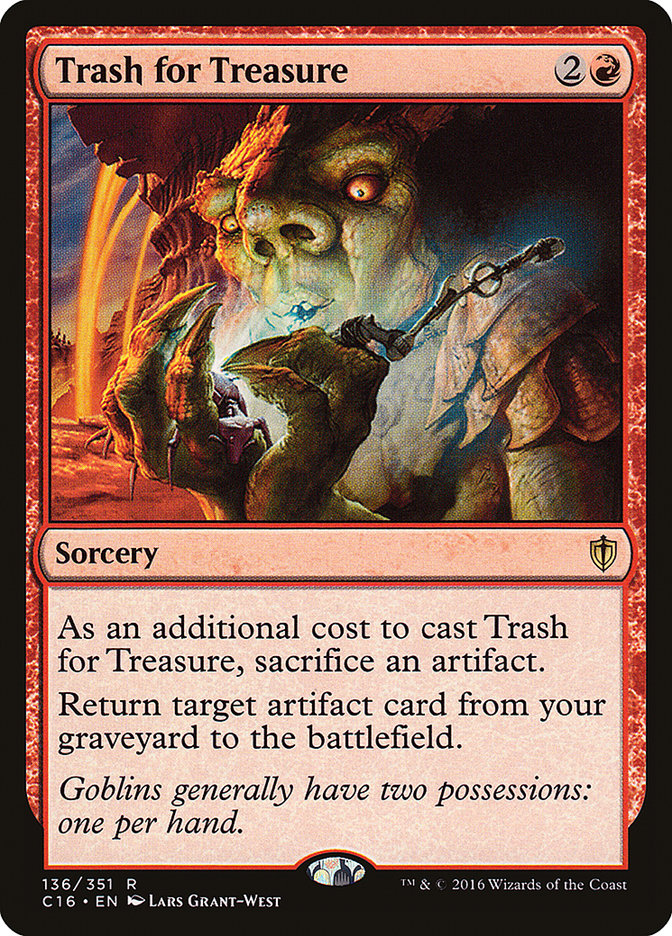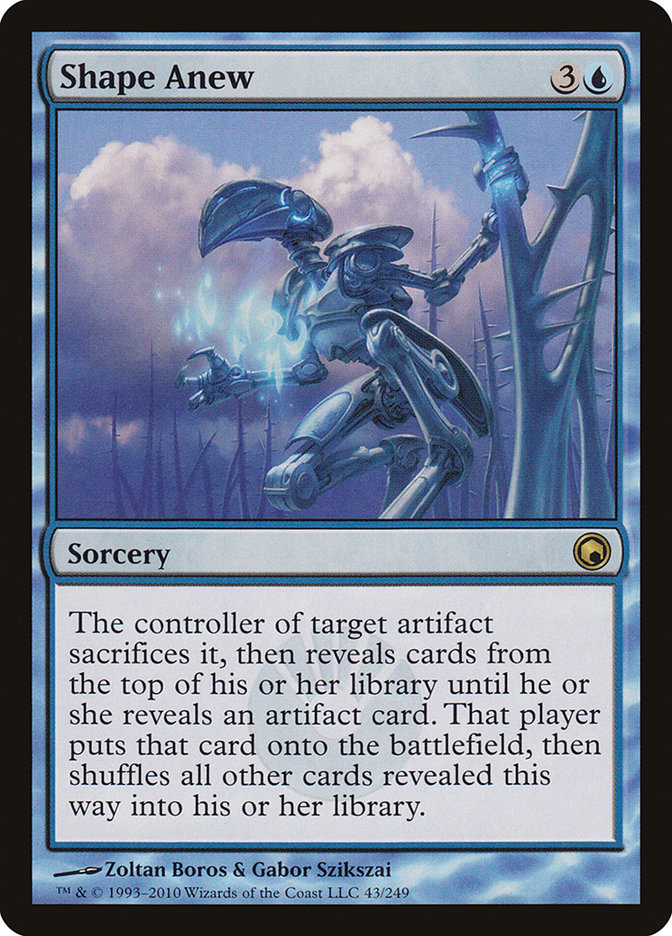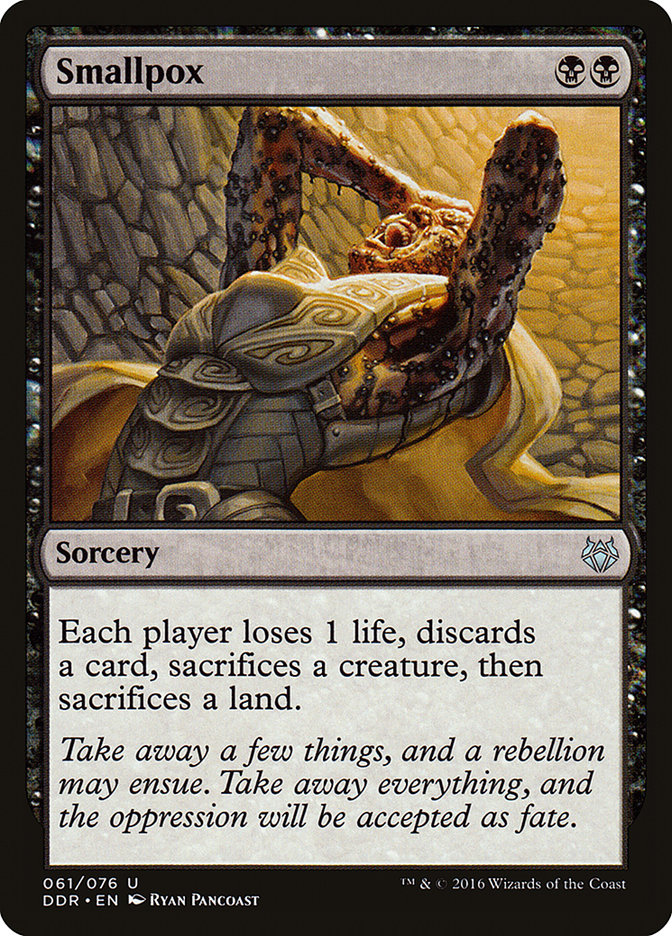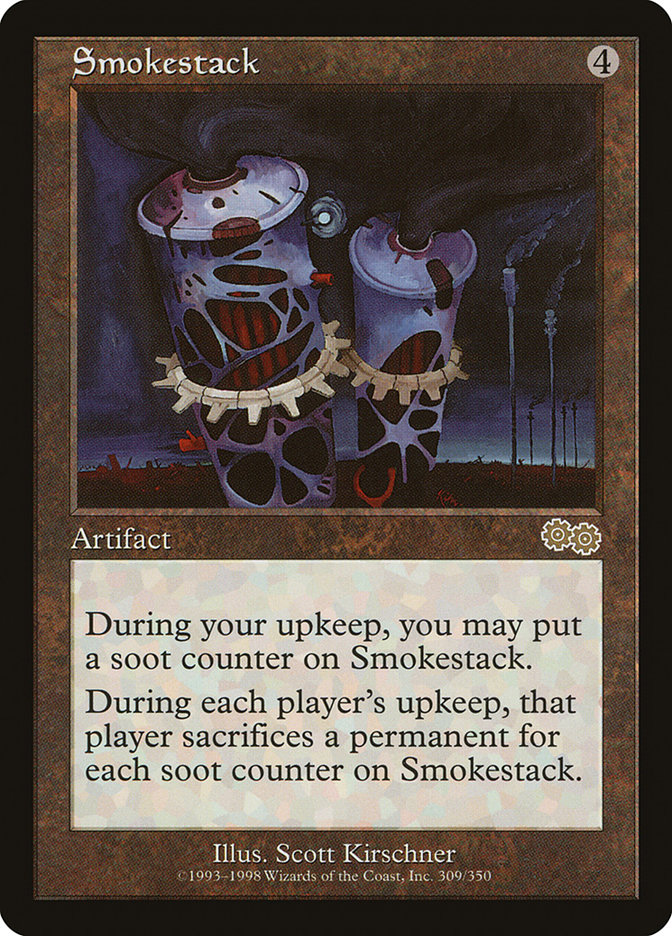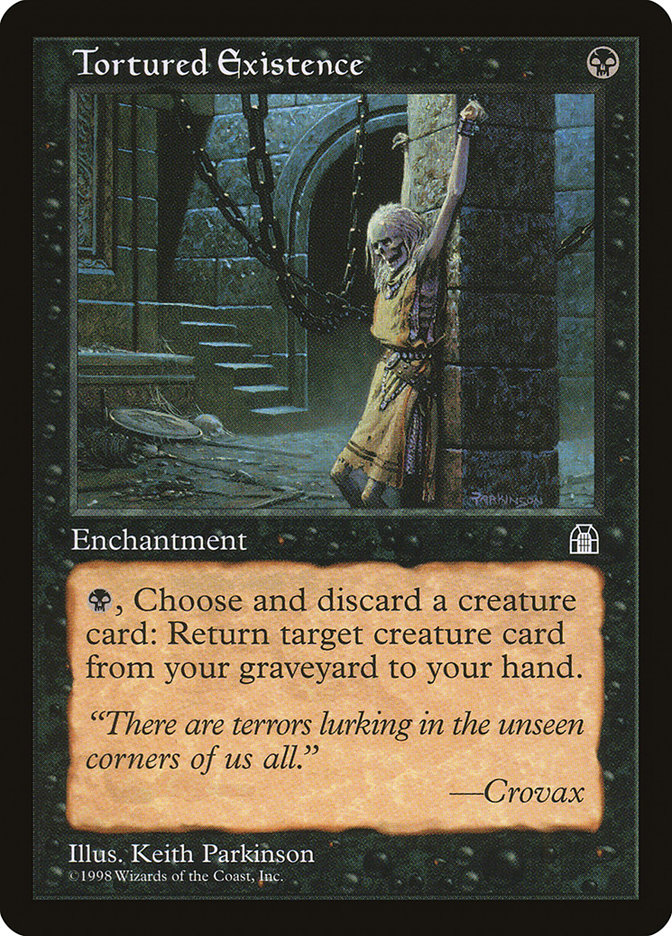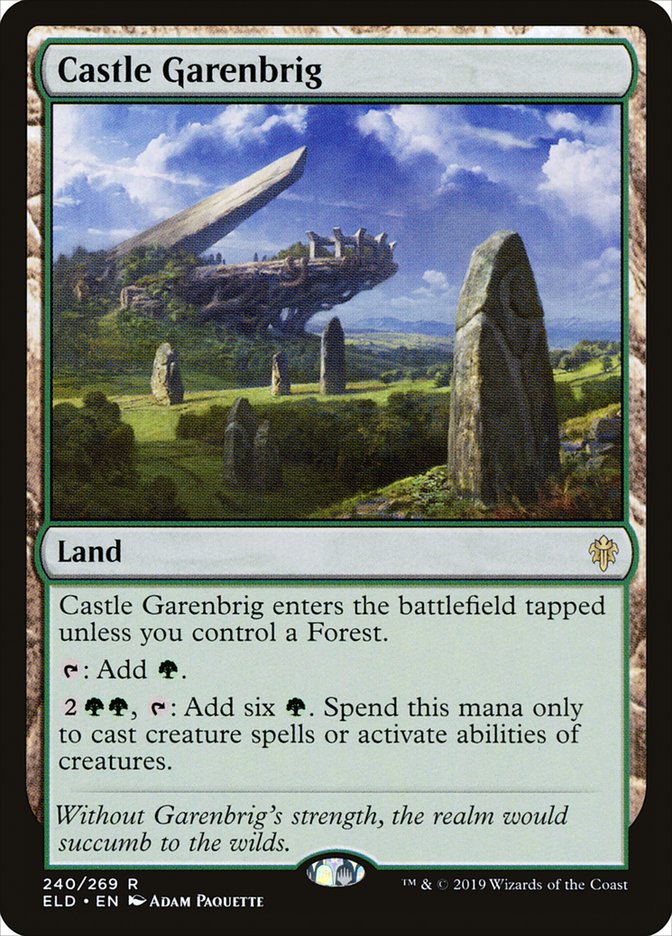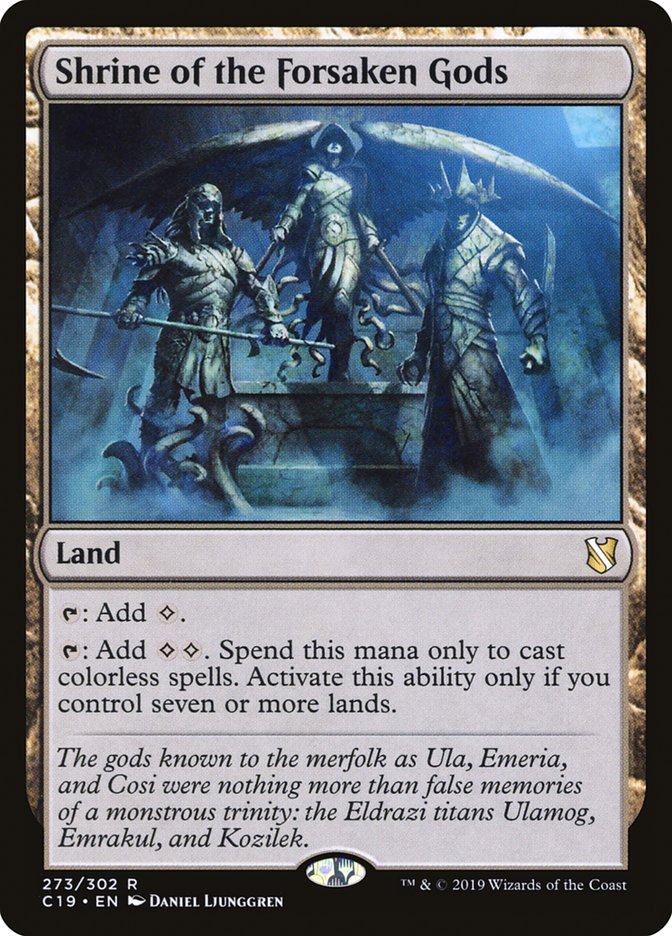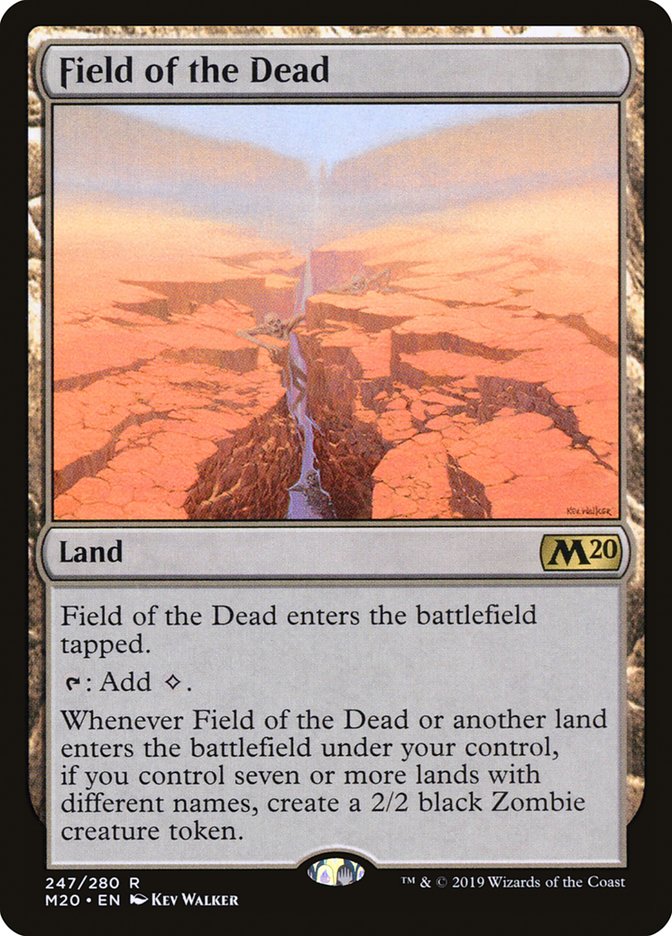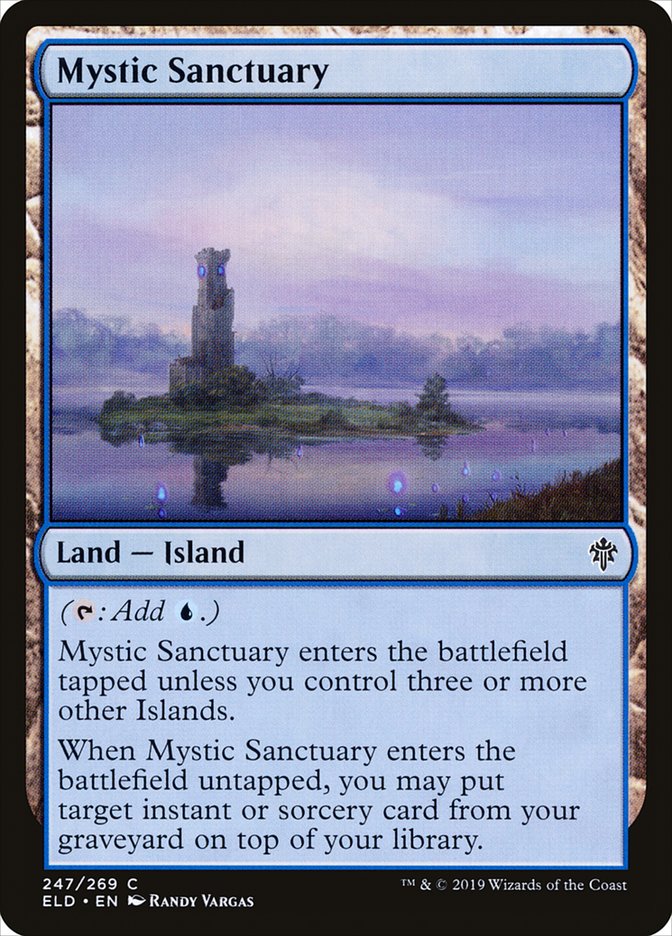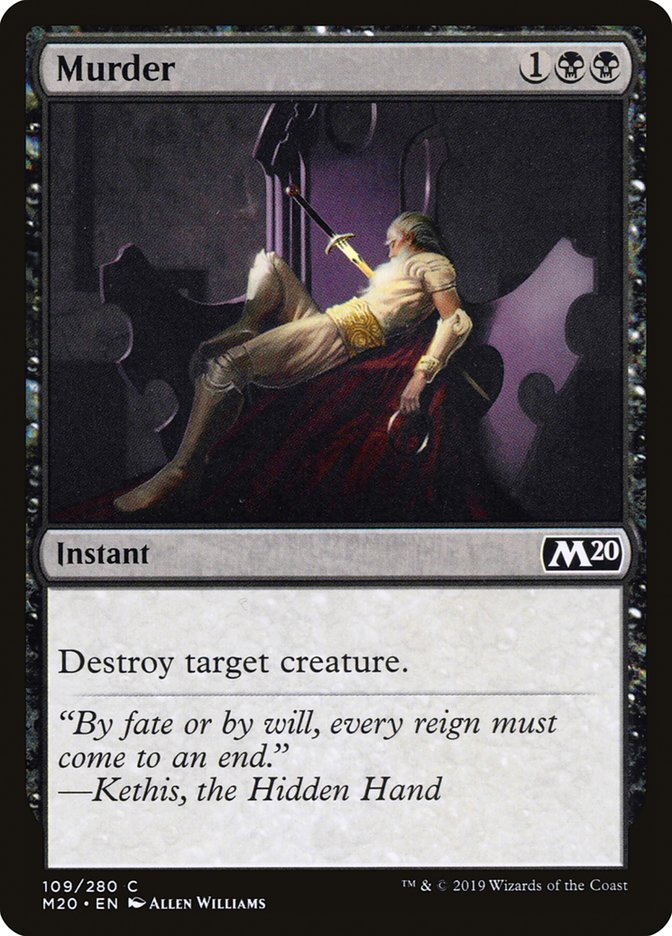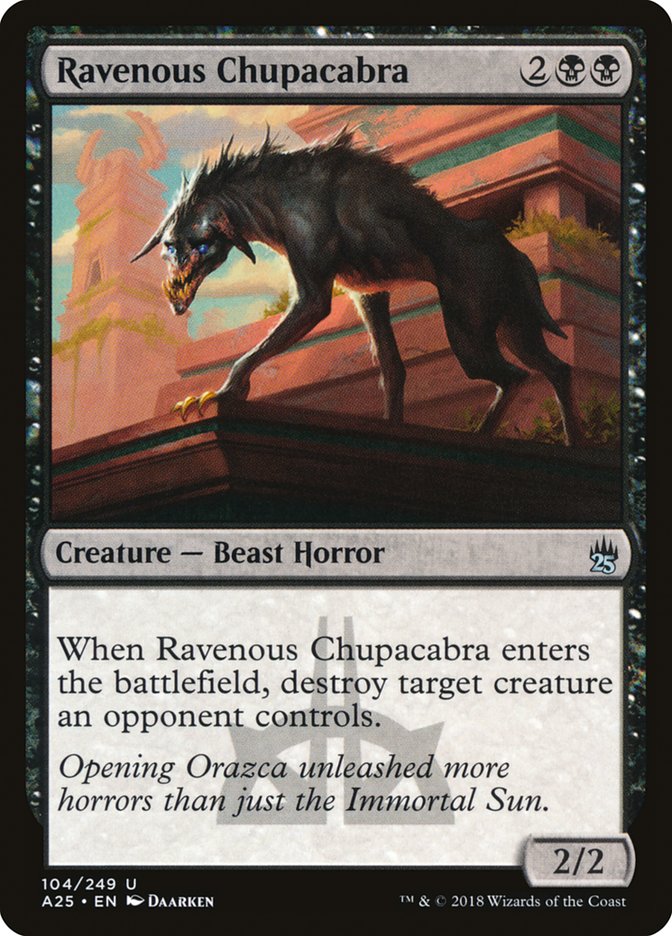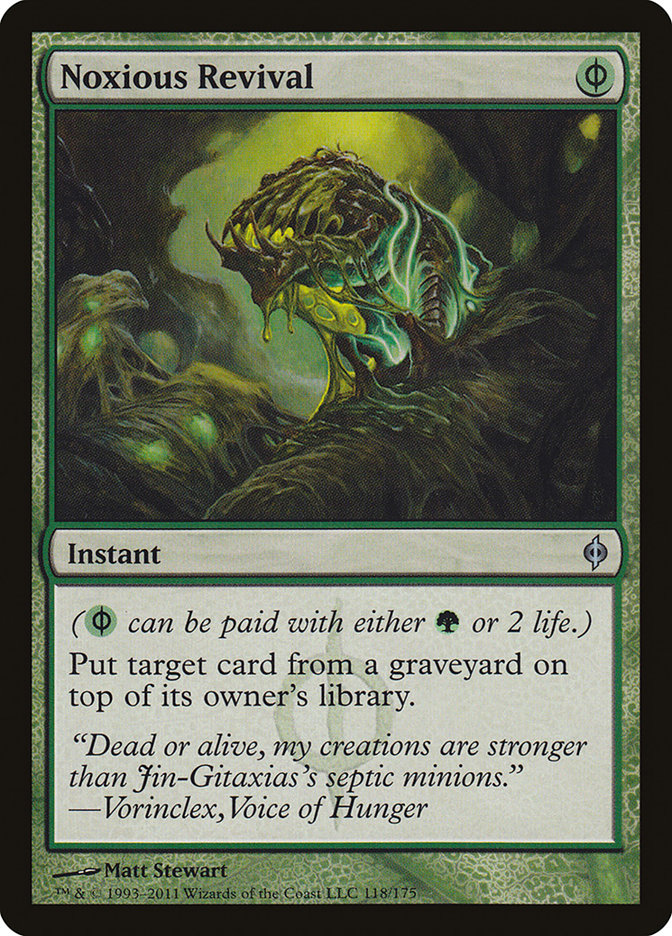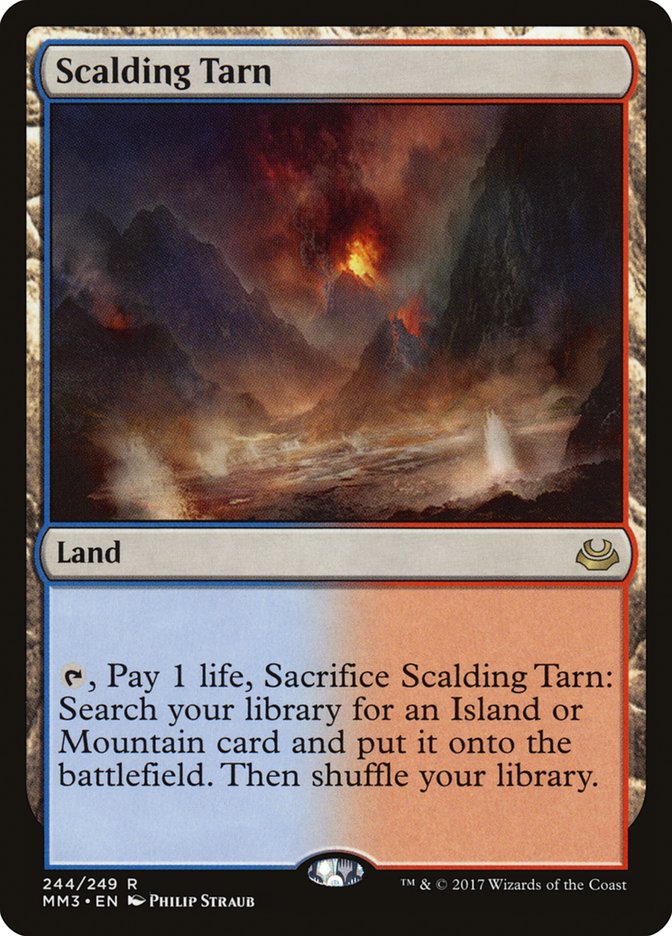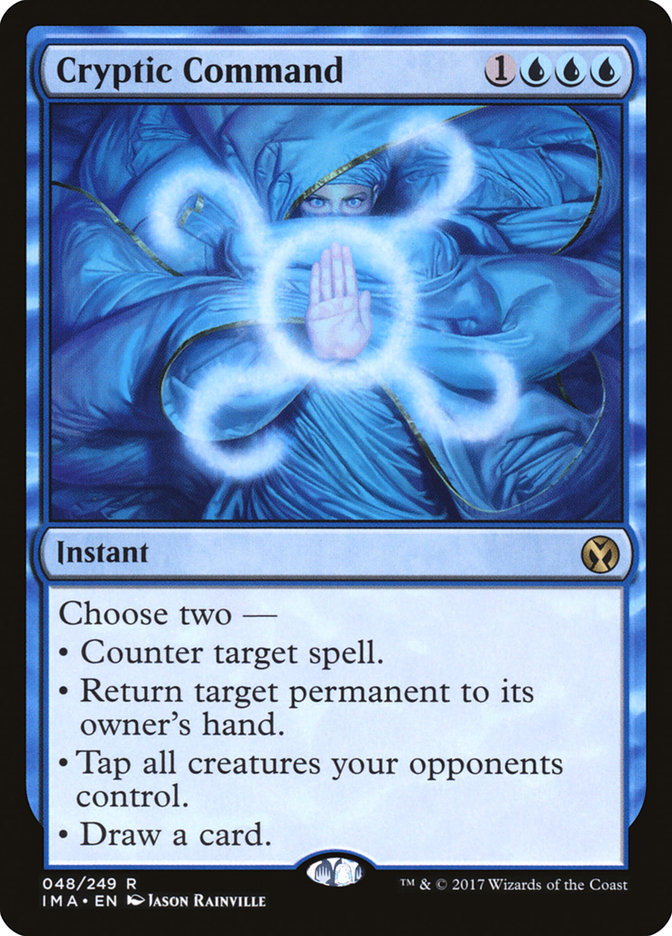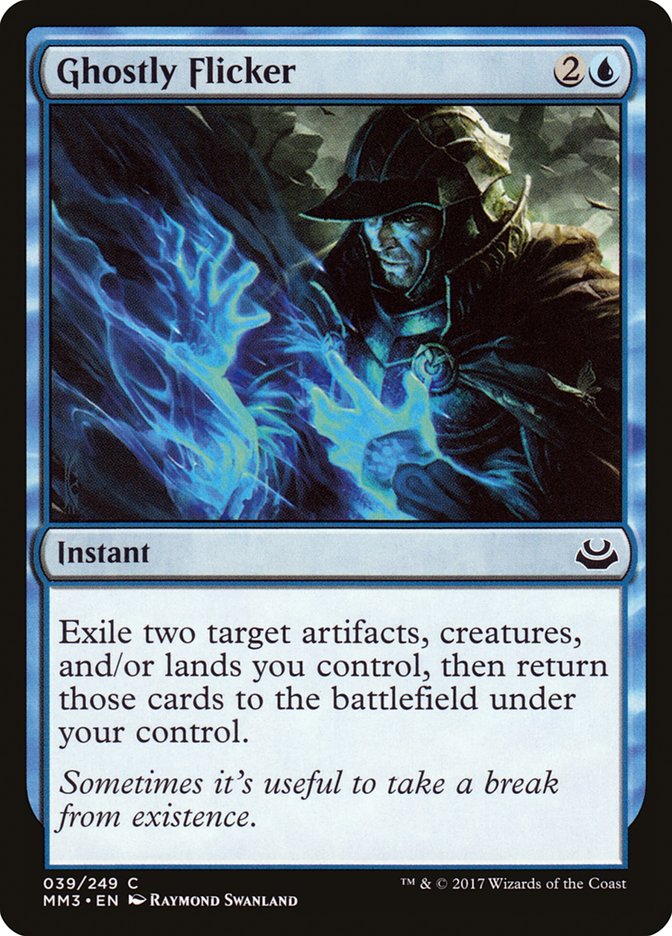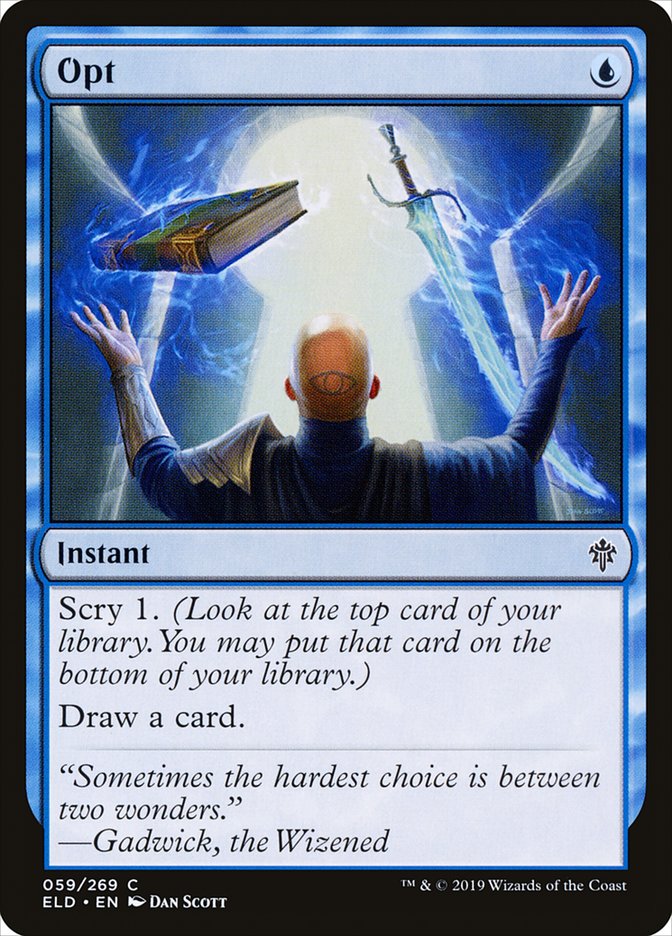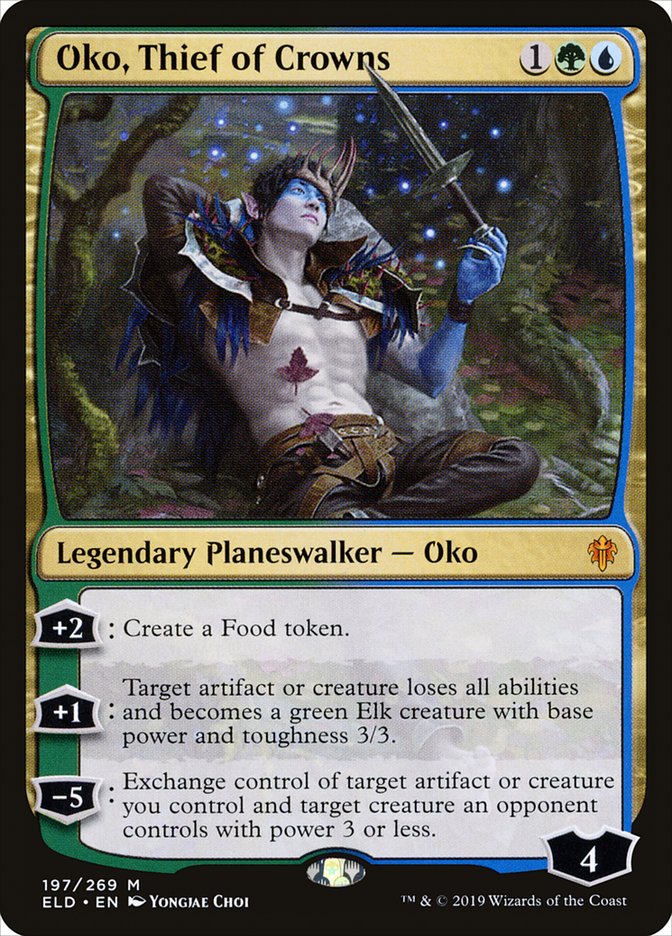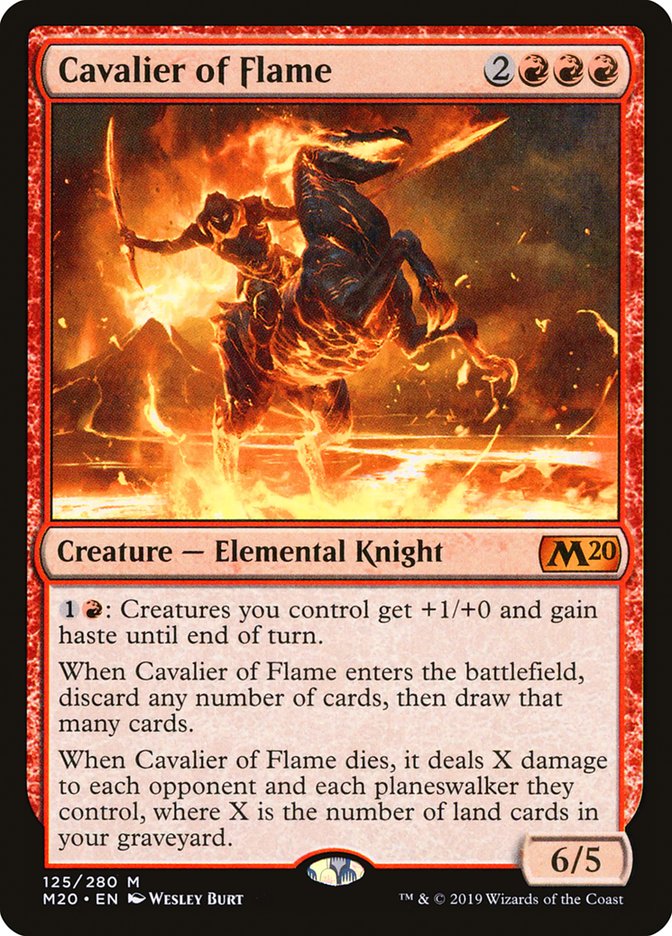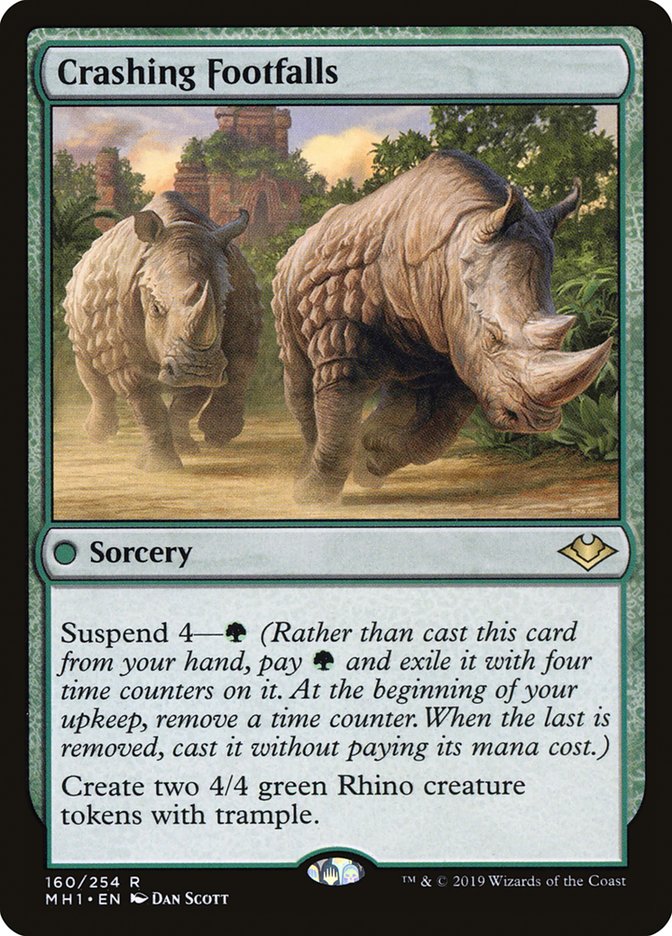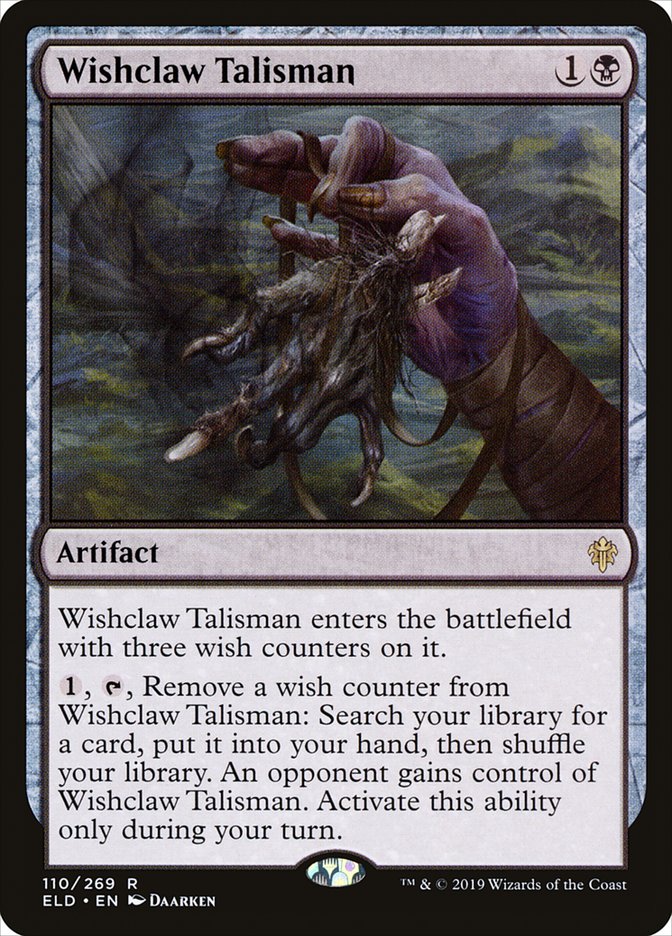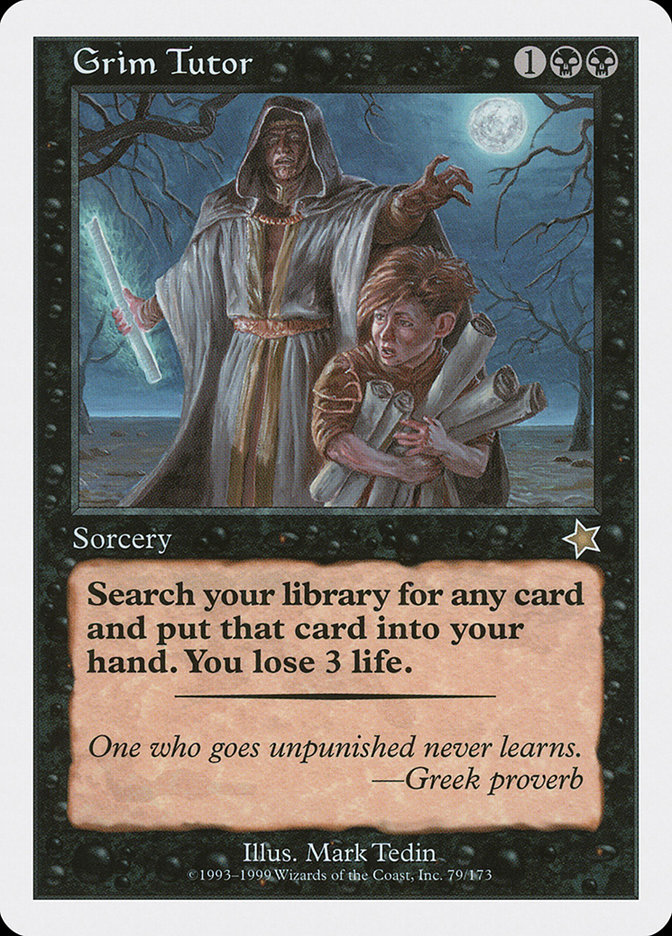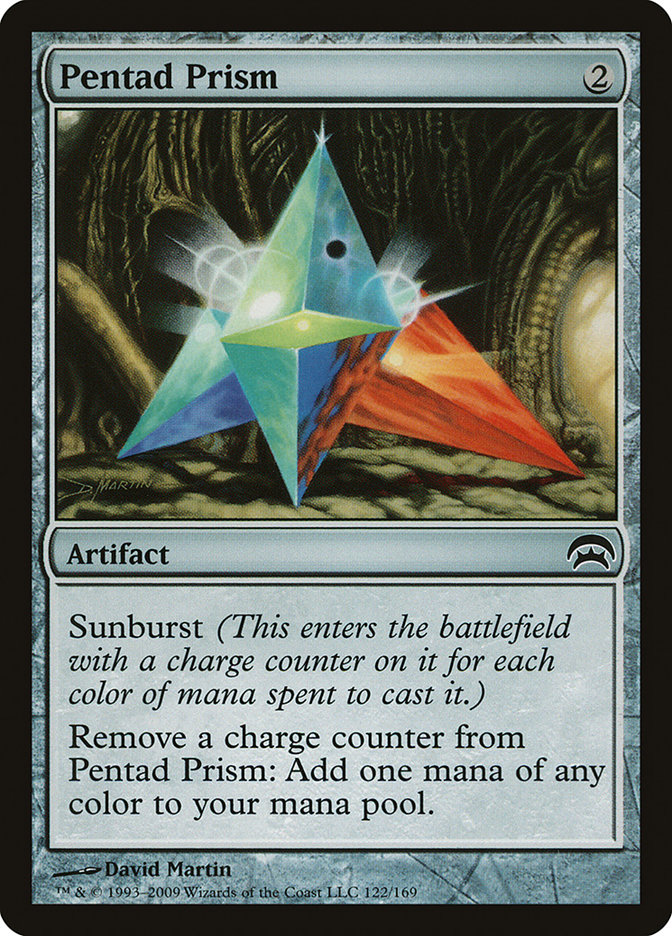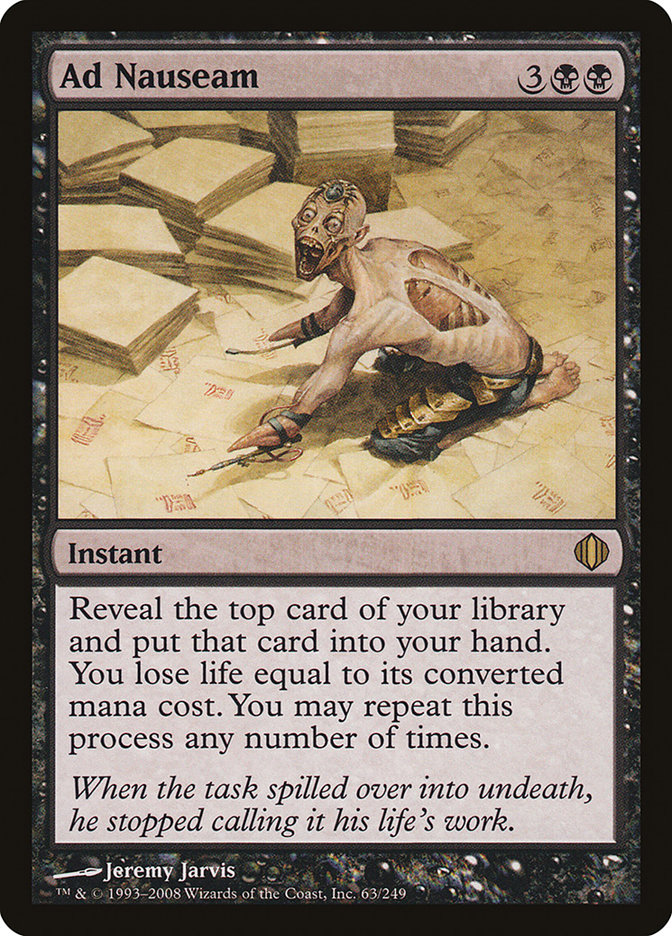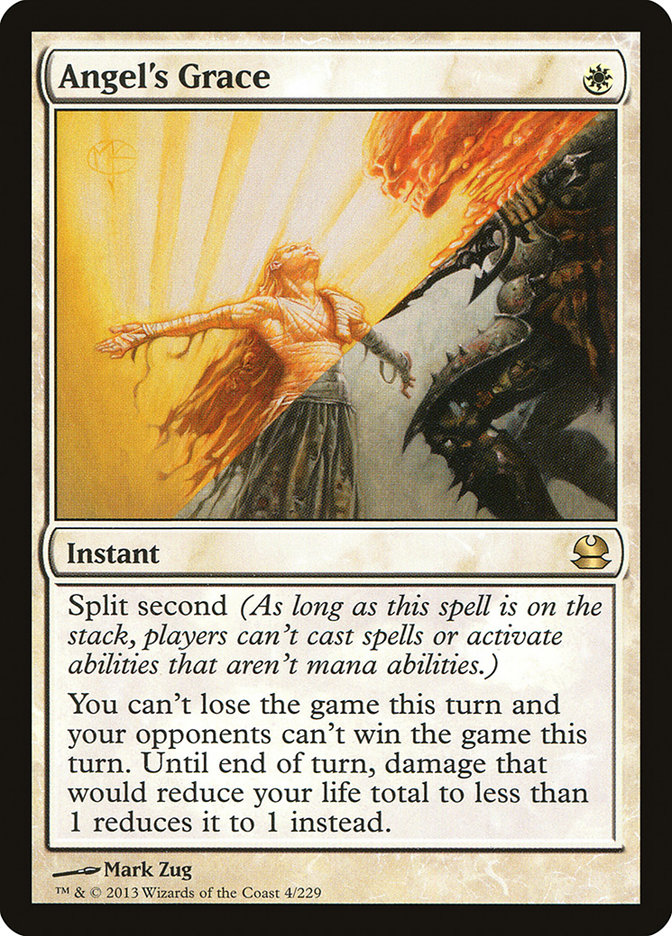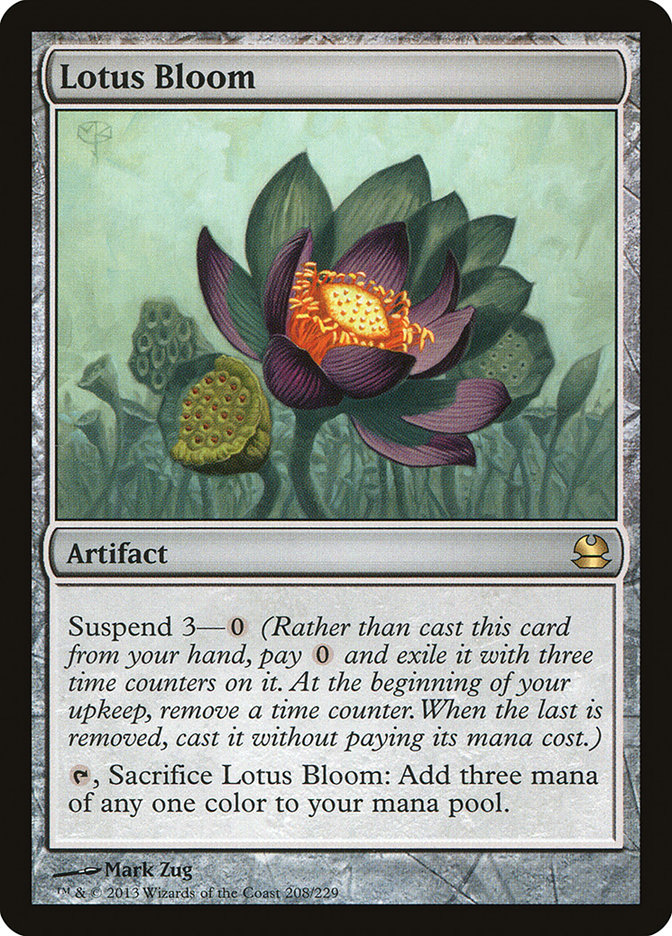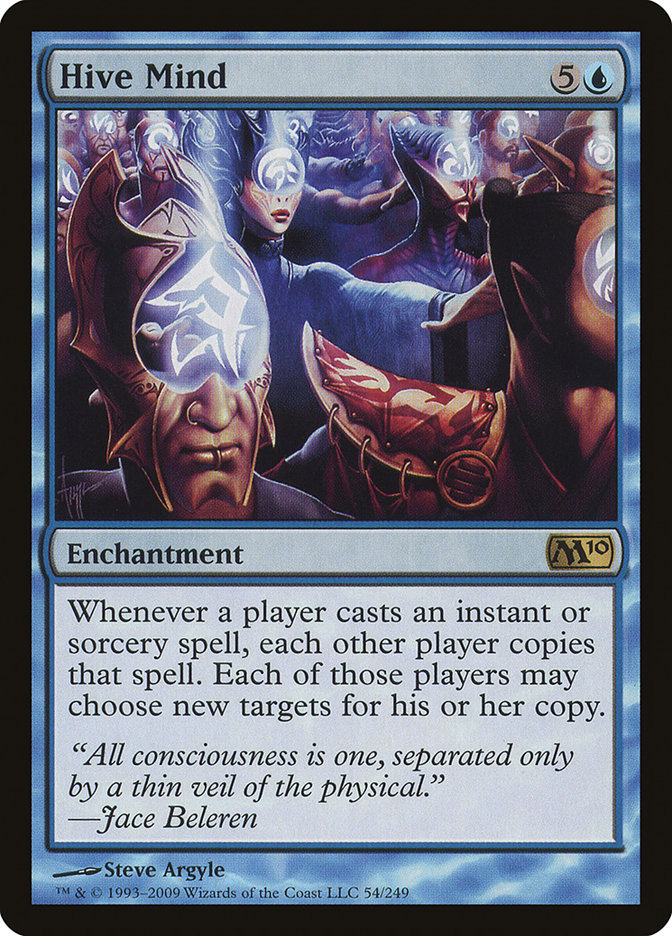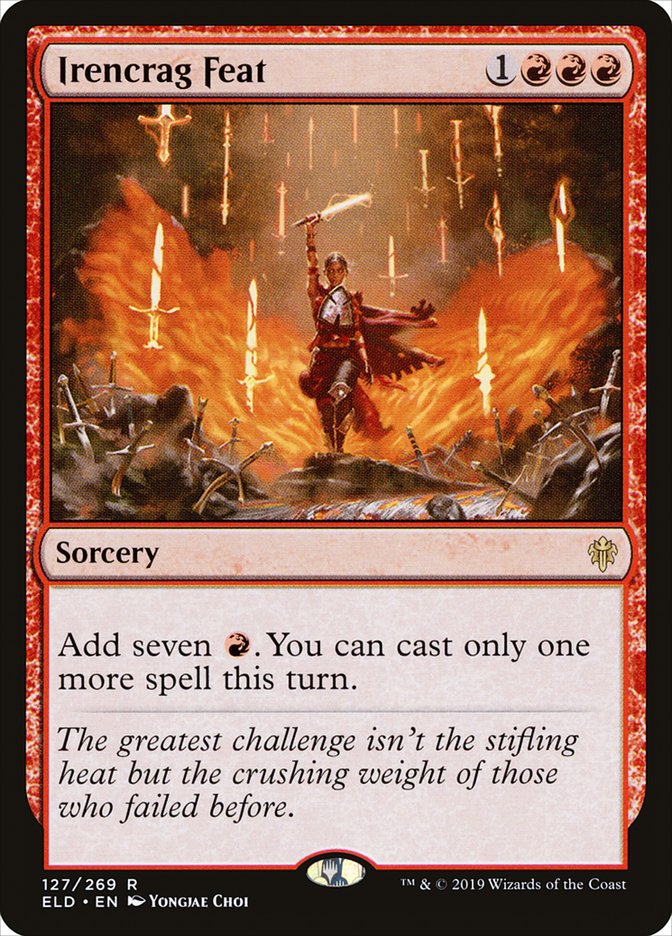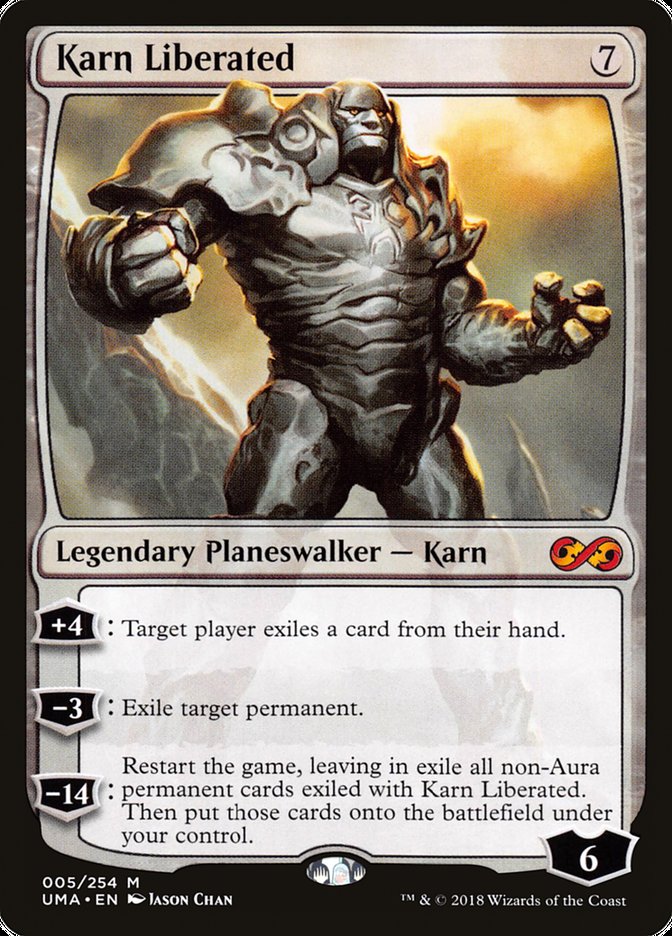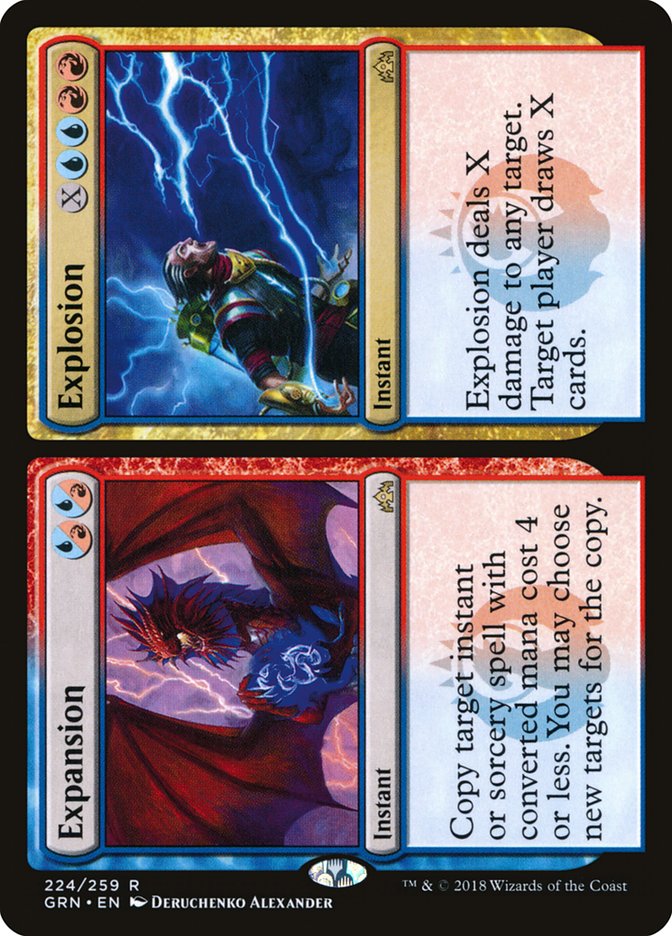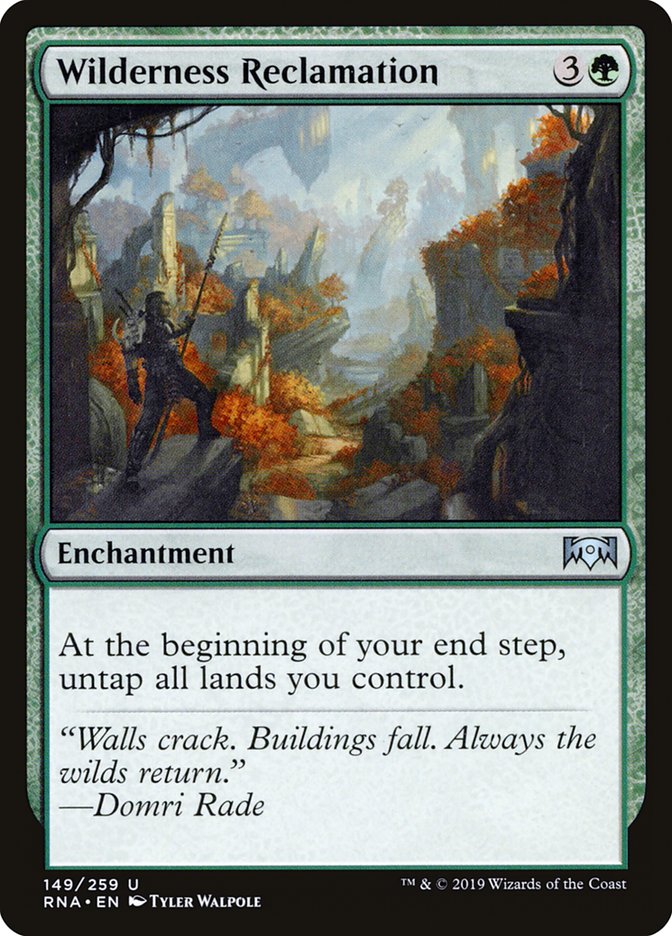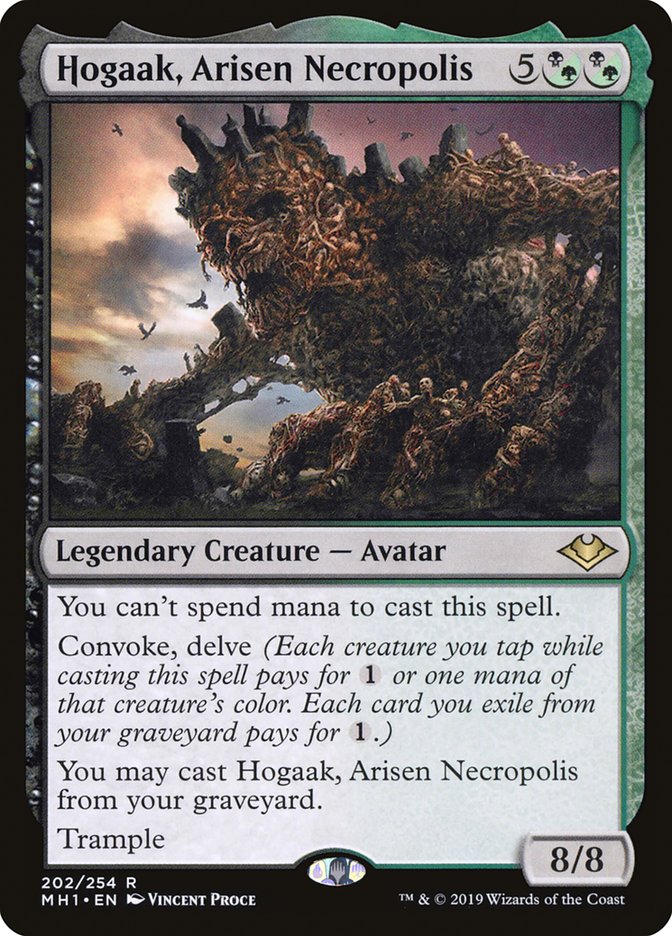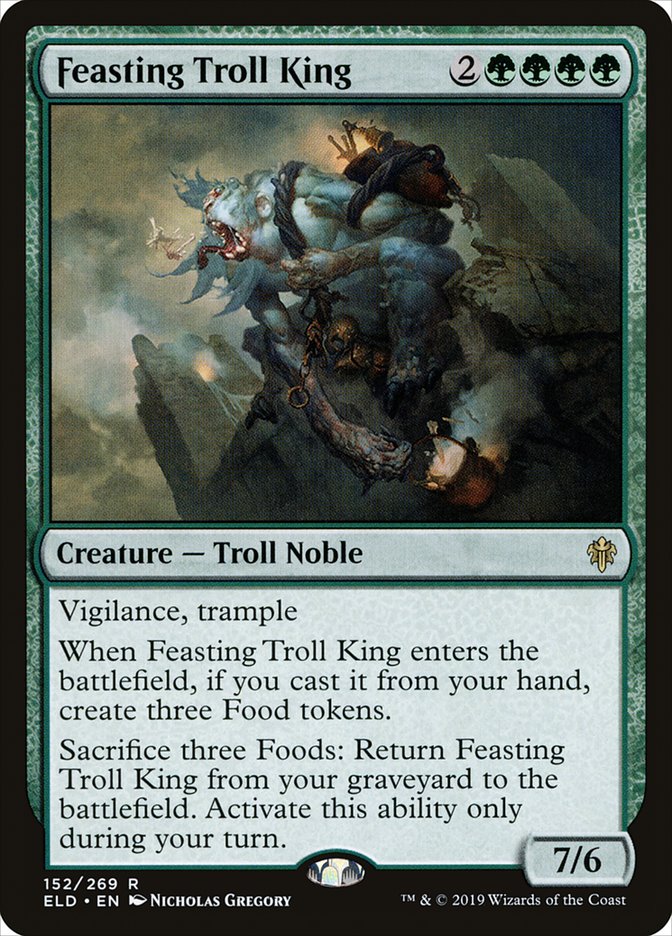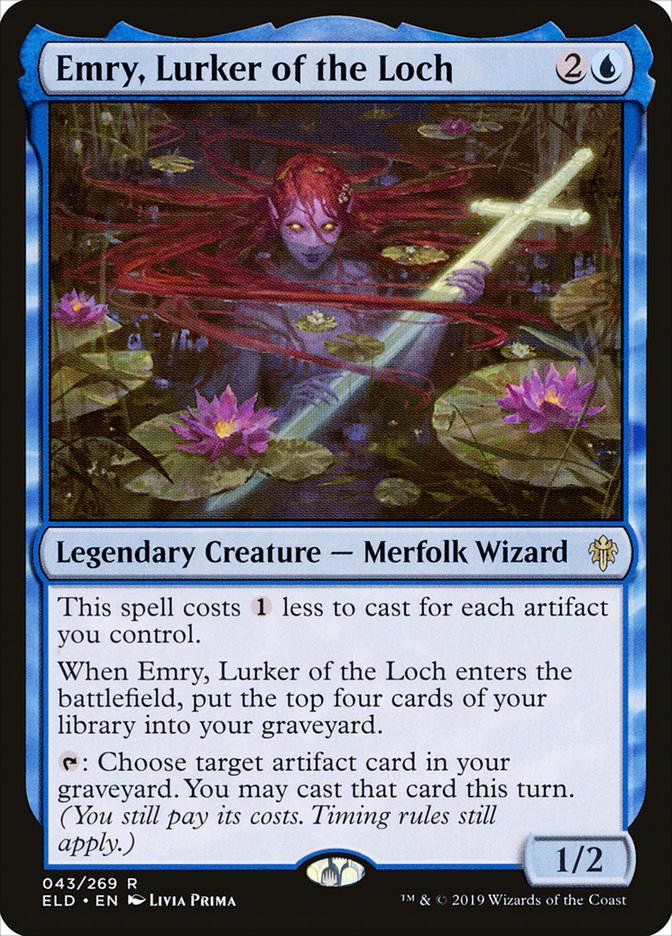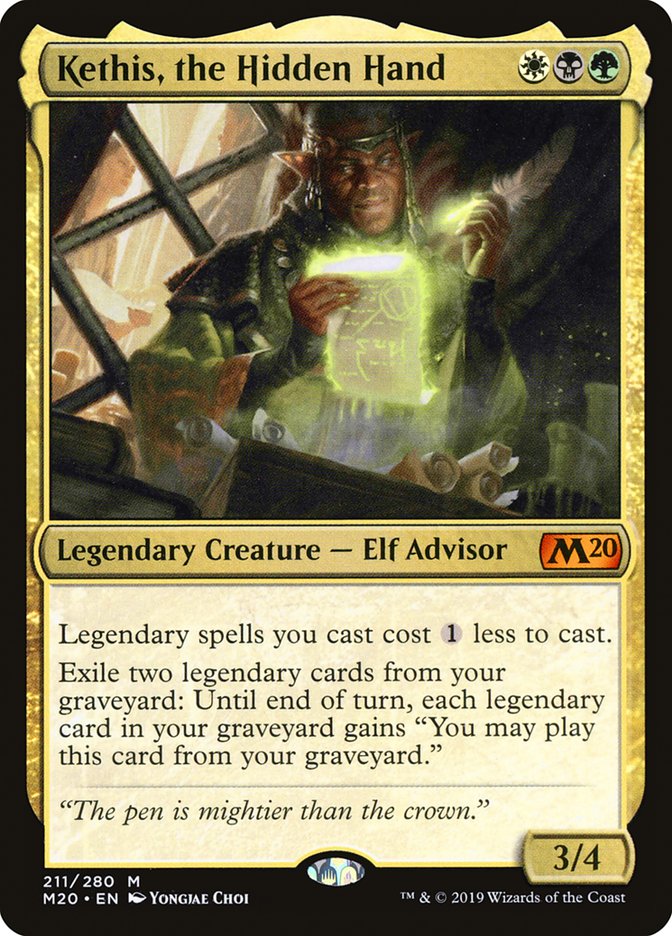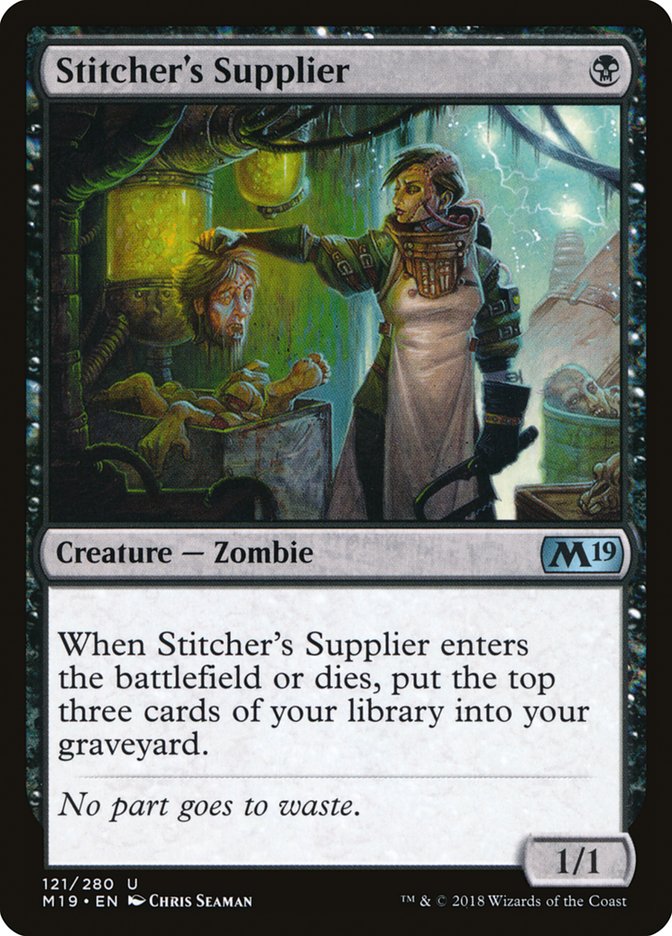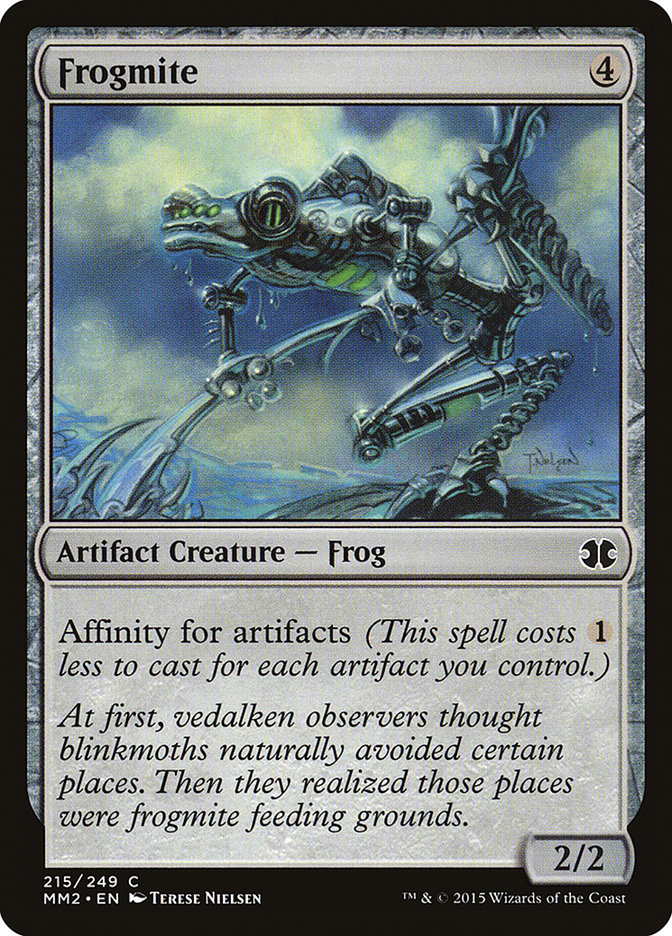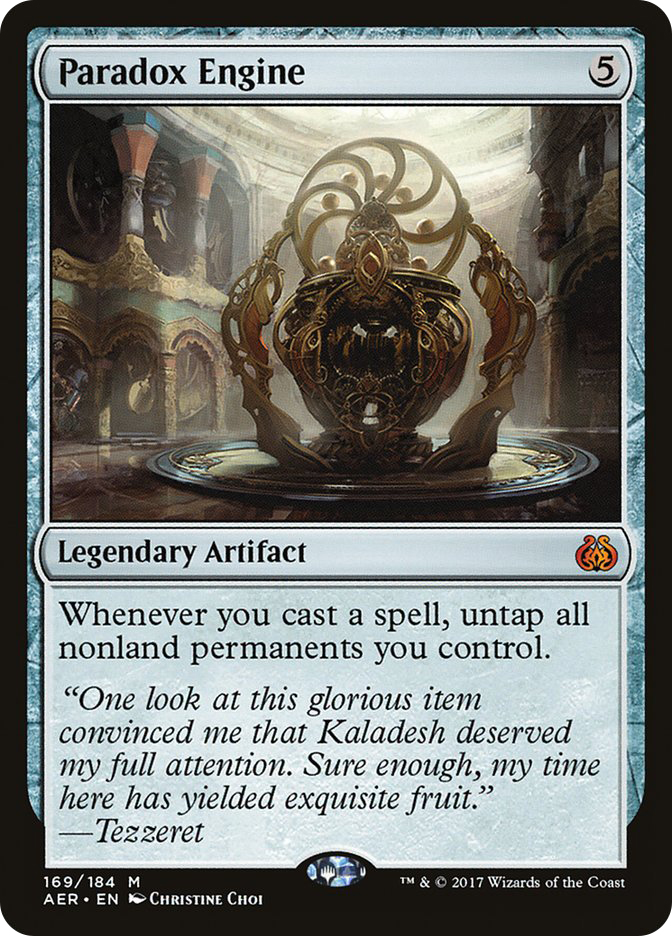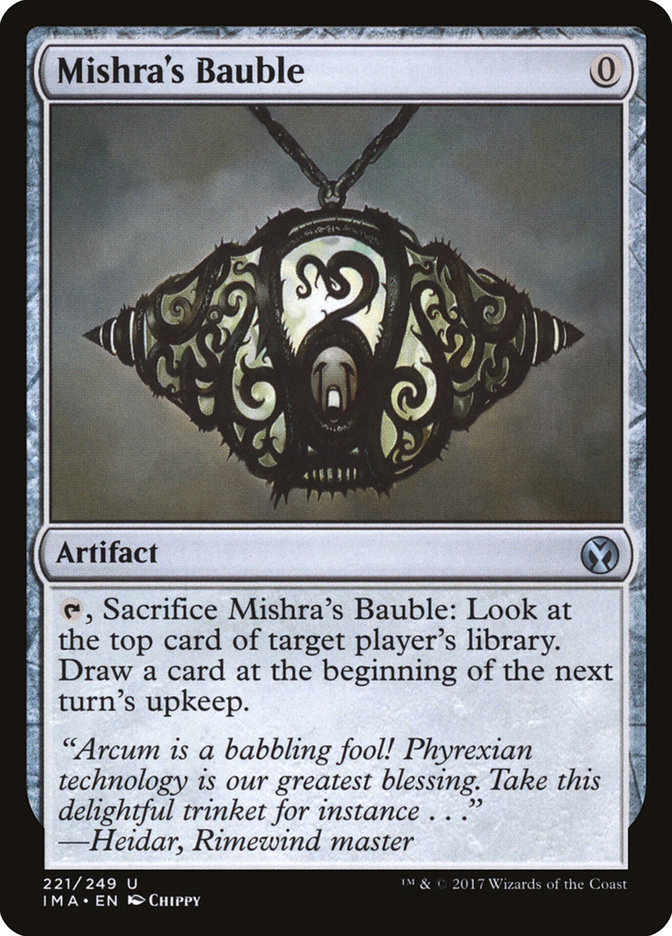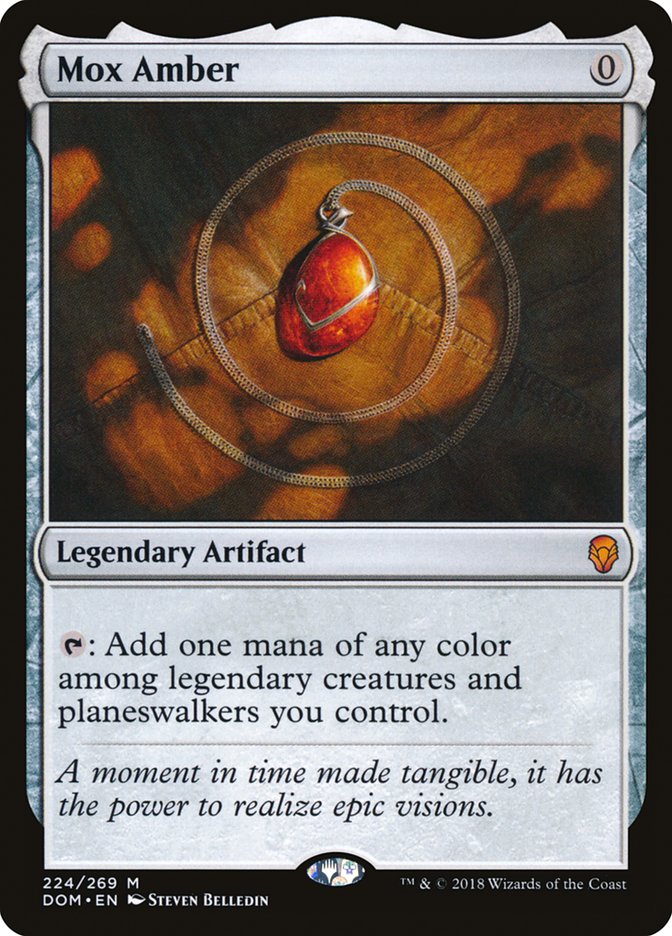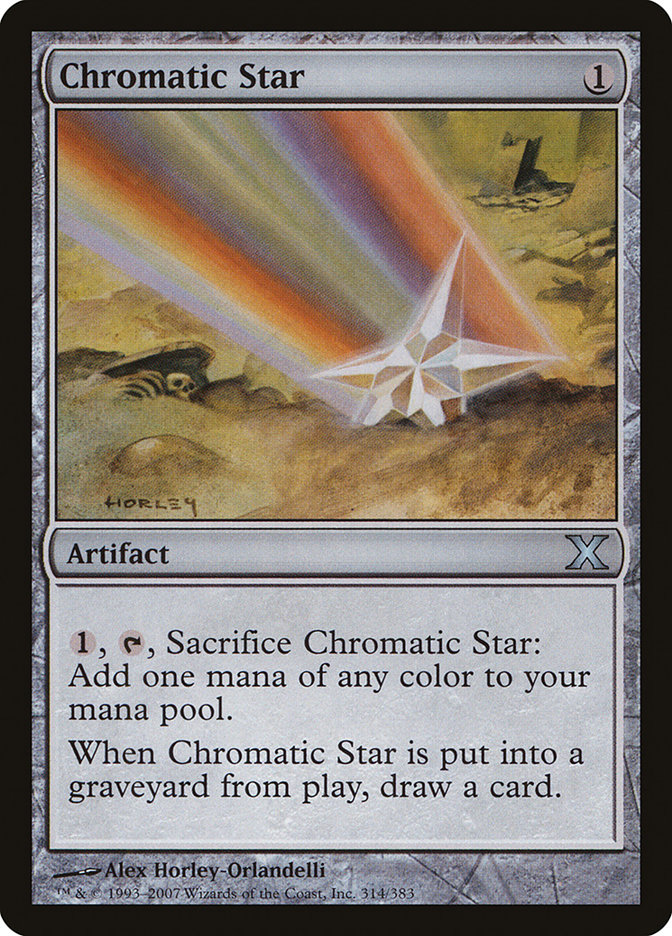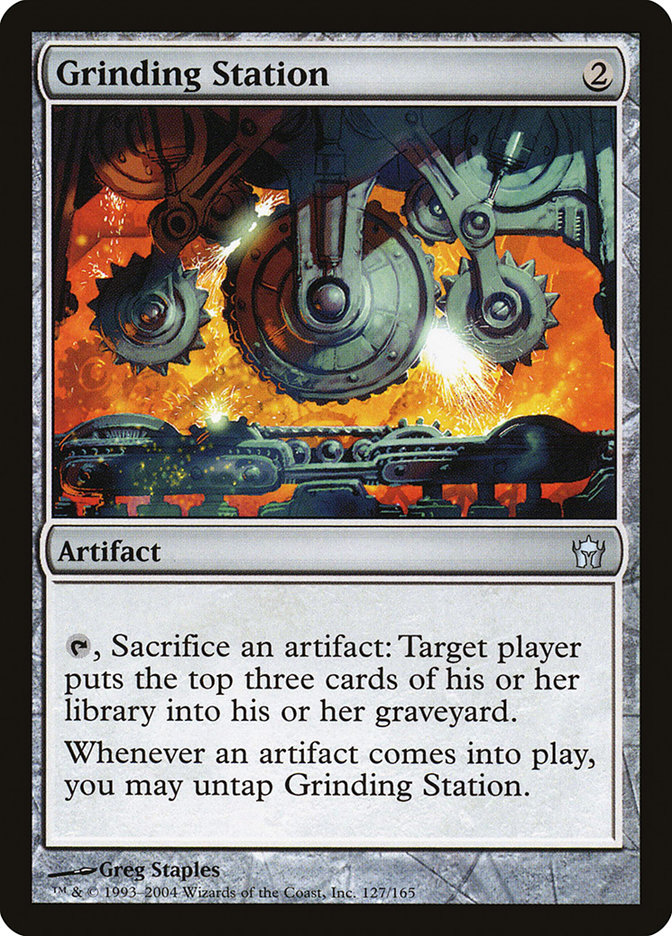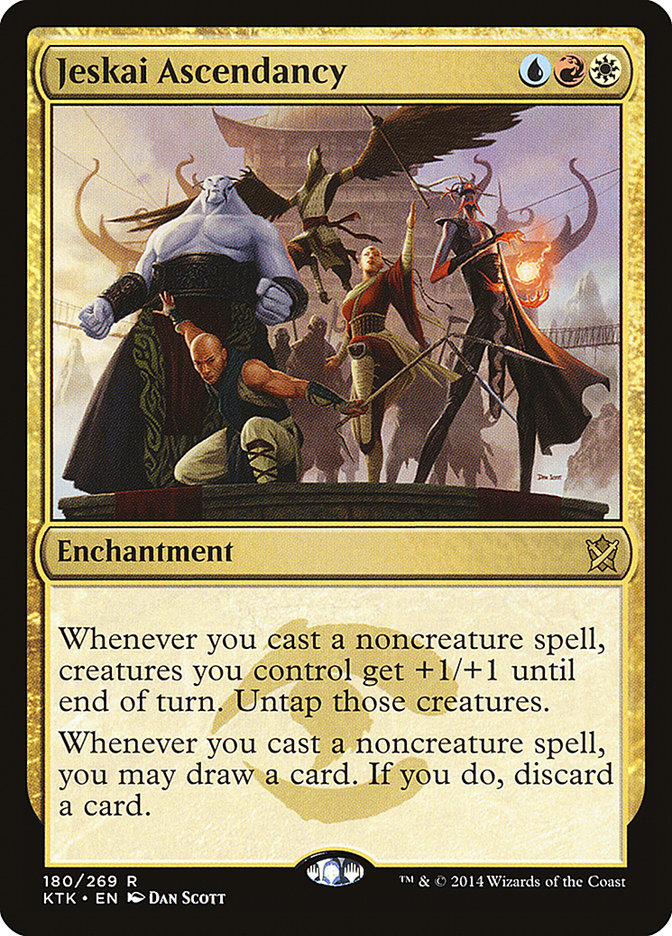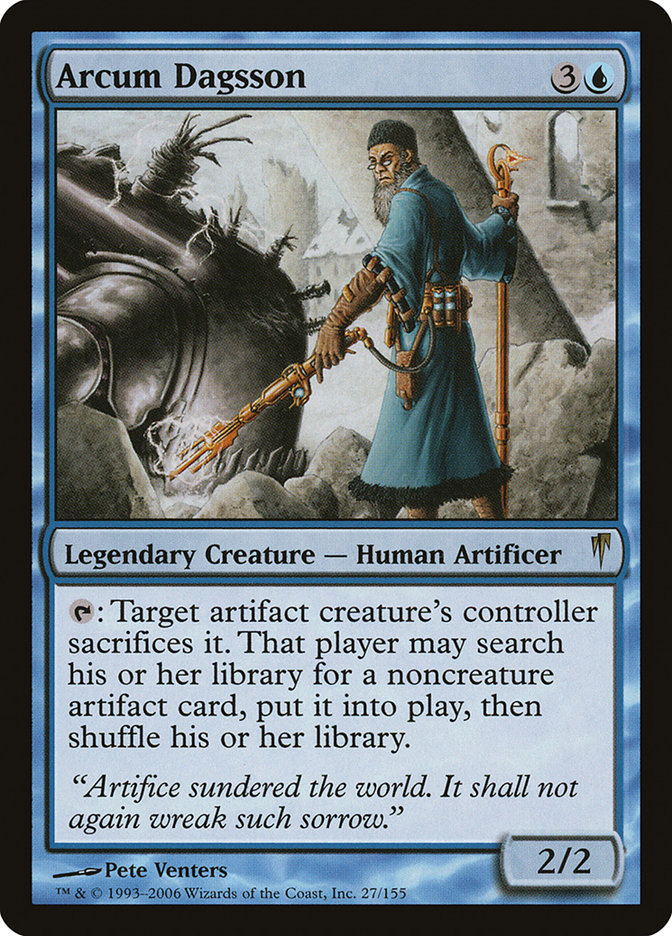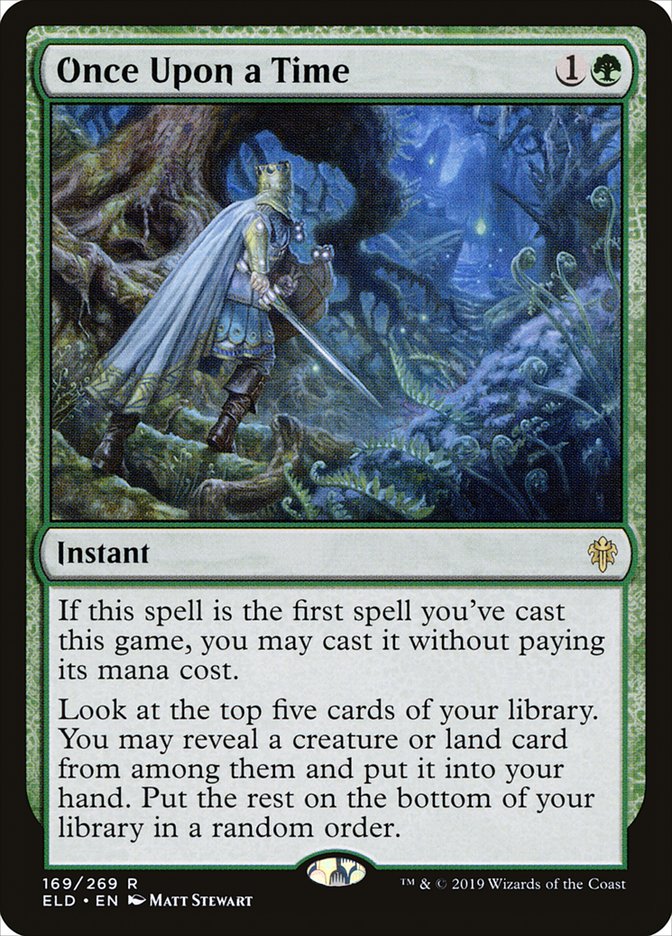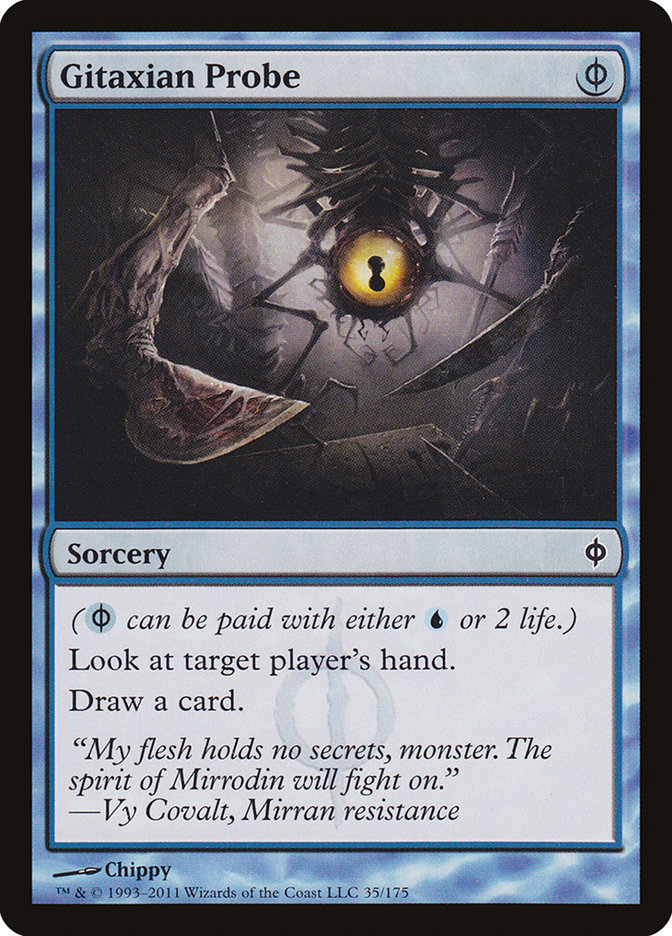One week ago, @T1Thoughtseize compared Eldraine to Urza's block. I disagreed.
A week later we aren't quite Saga or Legacy, but you could convince me Eldraine has hit Destiny levels. pic.twitter.com/HProIRHZ2I
— Ari Lax (@armlx) September 16, 2019
Throne of Eldraine is a broken set.
Not just overpowered. I’m not talking about Siege Rhino, where the stats are just off the charts.
I’m talking broken. There are a ton of cards that just violate basic design rules of Magic. Rules that exist because over the last 25 years we’ve seen what happens when you break them.
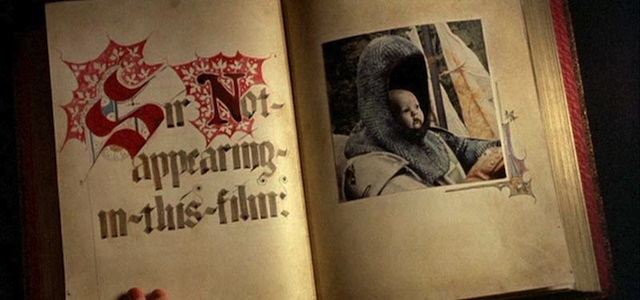
There’s a wild number of things that don’t even register on this scale of broken cards. Much like other broken sets, everything around the real broken pieces is powerful as well.
The cost reduction legendary artifact cycle? Too fair, restrictions too gated in spending a bunch of mana already. Garruk, Cursed Huntsman, aka basically Elspeth, Sun’s Champion? Elspeth was the second-best card in the entire Theros block, but still a fair card.
We’ve got more important things to be worried about.
10. Bartered Cow
I don’t quite know what I’m doing with Bartered Cow that breaks things open. I just know it’s fundamentally a breakable card.
Bartered Cow effectively has “madness zero, make an artifact. ” One of the hallmarks of broken cards is being able to convert resources at no cost, and Bartered Cow is just that. I’ve played Welding Jar in multiple decks as a zero-mana artifact for Mox Opal with some other text. It’s not hard to assume that “Basking Rootwalla but an artifact” is a big game.
The thing I absolutely don’t have the answer for with Bartered Cow is how to merge it with traditional artifact payoffs, especially with Faithless Looting out of the format. I had some ideas for non-traditional artifact payoffs, where Bartered Cow is technically a nonartifact you can cast with Inspiring Statuary, but that quickly descends into nonsense territory. Quicksmith Genius is the Gatherer deep dive find, and at that point I really have no idea what you’re trying to do but you do have a ton of free loots to get to it.
I’m not super excited about the Modern Trash for Treasure options, especially without Faithless Looting, but Bartered Cow is a reasonable card for a reanimator shell that needs to control an artifact. On a similar note, Bartered Cow is a “nonartifact card” artifact for Shape Anew if Inkmoth Nexus wasn’t good enough.
One less linear way to utilize Bartered Cow is fueling attrition resource engines. Discard Cow to Smallpox, Crack the Earth and sacrifice the token, just take the fact that Cow is a discard and another permanent to the next level.
For Pauper fans, this card is an alternate Golgari Brownscale in the Tortured Existence deck. You have to pay mana for the life, but you again get a permanent. I don’t know the Pauper card pool well enough to know what an artifact can do for a non-Affinity deck, but if you also play the basically free Arcum’s Astrolabe, you are getting to relevant artifact density for some small payoff.
9. Castle Garenbrig
Lands that make two mana are very powerful.
People played Shrine of the Forsaken Gods and were happy about it, and it literally only made two mana if you were casting Ulamog, the Ceaseless Hunger.
The thing that separates Castle Garenbrig from a lot of the two-mana lands we have seen in the modern era is that the opportunity cost is basically nothing. Control a Forest, and Castle Garenbrig is the same thing as another Forest with upside. The condition is also fairly minimal. Here’s some green mana to spend on creatures, as if you weren’t already putting ramp creatures that only made green mana in your deck and weren’t already seeing green or colorless creatures as the best ramp payoffs.
You probably were already looking for differently named Forests anyway. It isn’t a big ask to put this one in your deck.
#8 – Mystic Sanctuary
Why is Mystic Sanctuary a big deal, but Witch’s Cottage not?
One of these cards goes to your graveyard by default. The other doesn’t.
Witch’s Cottage only represents recursion if the game is in a midrange exchange state. Mystic Sanctuary is always recursion once you hit the Island threshold.
The free version of this effect exists already. It has seen significant play. And Mystic Sanctuary doesn’t cost a card to use.
And you can fetch Mystic Sanctuary. Azorius Control was already leaning towards Celestial Colonnade being mediocre anyways. Just play more fetchlands and shocklands and get a more powerful effect from a nonbasic.
And you can loop Mystic Sanctuary since it’s a permanent. Cryptic Command your spell, fetch Mystic Sanctuary, get back Cryptic Command, counter your spell, bounce Mystic Sanctuary. You can break out of this by building up to a big turn and unloading, but that doesn’t stop it from being miserable.
People are going to say “but Mystic Sanctuary doesn’t draw a card,” and that’s where they’re wrong. When you get to the point of the game where this recursion matters, how much does a land off the top of your deck matter? Is it worth a third of a card? Less? Is your best spell in your graveyard worth more than a random draw step by a significant margin? You aren’t directly up a physical piece of cardboard, but it’s easy to imagine redrawing your best spell converting into that if not more.
Again, all for no mana, all fetchable.
Did you also remember that next October we have Zendikar Rising? As much as I was hoping we didn’t have fetchlands in Standard again due to shuffling, Mystic Sanctuary makes me hope to not see them even more.
7. Oko, Thief of Crowns
Oko, Thief of Crowns is broken in a similar way to Teferi, Time Raveler. Oko forces the game through a very specific gate that punishes a ton of cards, and even if you manipulate your deck to pass through that gate, Oko is still a great card.
I laid this all out a couple of weeks ago, but the part I undersold that keeps coming up is that your opponent can’t really fire back into an Oko that used its +2 on-curve. What are they going to do, cast a creature you just steal with a Food token? They have to already be ahead or have a four-power creature, and those are both big asks.
Oko is also a breakpoint for this ranking. It’s the last and maybe only fundamentally fair card on this list. Oko’s real broken sin is making normal Magic too miserable to play, so people start bypassing fair things in favor of the other cards on this list. In the same way Reflector Mage is responsible for Aetherworks Marvel and Emrakul, the Aeons Torn, Oko, Thief of Crowns will be responsible for Field of the Dead and other nonsense.
6. Fires of Invention
I had wanted to include Fires of Invention on this list before seeing Todd’s article, but that was because I have always been on Restore Balance nonsense. The previous Electrodominance lists struggled with Teferi, Time Raveler crushing that card, so despite Fires of Invention looking like a bounce-able enchantment, all you cared about was another way to cast your null-cost spells at sorcery speed.
Then Todd compared to it Wilderness Reclamation. That too is a broken thing to do.
They Might Be Giants
Fires of Invention looks very strong and Escape to the Wilds is a great piece for it. My excitement about cards that are sometimes but not always Giants may have skewed what I wanted to splash, but I think Realm-Cloaked Giant ties the plan together nicely. pic.twitter.com/rHQjAJeKGQ
— Felix Sloo (@xfileMTG) September 17, 2019
This is a good start to examining the differences between Wilderness Reclamation and Fires of Invention. You get to cast two sorceries a turn with Fires, as opposed to one huge instant or any number of smaller ones with Reclamation. Your deck looks completely different, since your goal isn’t to one-shot with twenty mana on one spell, but just to ensure a constant churn and overpower with eventual mana and card utilization. Adventure is the perfect mechanic for that, and Realm-Cloaked Giant is clearly the highest-impact one to play.
The hidden other difference is that Fires of Invention actually gives you triple mana if you can use your actual mana on activated abilities. A sweep of Standard brought up Biogenic Ooze, which was already a nice threat with Wilderness Reclamation, and the real winner, Cavalier of Flame. I have no idea how your opponent survives double pump hasted Cavalier plus anything else, and the Loot effect makes it easy to assure you have that something else after the fact.
And that’s all ignoring the Modern applications with the null-cost spells. If the issue before was facing an opposing Teferi, Time Raveler, what about using your own Teferi to bounce Fires of Invention if you need to leave up a counterspell after resolving Ancestral Vision?
There’s a lot of unpack here, and I still have five more broken cards to get through.
5. Wishclaw Talisman
I want to stop for a second and just ignore all the nonsense.
Emma Handy did a good job of breaking the symmetry of giving your opponent a Wishclaw Talisman. But there was a consistent assumption I would never make with this card – why do I plan on passing the turn after activating Wishclaw Talisman?
Tutors used wisely inherently break the “symmetry” here. You cast them and find something, and your opponent dies that turn. Wish wisely.
The comparison to Grim Tutor is a nice one for Wishclaw Talisman, but that comparison gets even nicer when you slide another comparison in the middle.
I said I don’t plan on passing the turn after activating Wishclaw Talisman. What about after casting it?
If you are casting Wishclaw Talisman and then passing the turn, that’s where stuff crosses way over the existing line. It’s a three-mana tutor, but you only have to pay one of that mana on the turn you win the game. Emma mentioned this briefly, but I think it’s honestly the most important aspect of the card.
Wishclaw Talisman is Grim Tutor, but with a Pentad Prism built in.
One convenient piece of math that pops to mind is Modern Ad Nauseam. A Lotus Bloom, Ad Nauseam, Angel’s Grace kill on Turn 4 costs six mana, but you have three from the Lotus Bloom and four land drops. You can lead on a Wishclaw Talisman and then find the missing piece for the clean kill. Since that deck’s biggest functional issue is that it only plays four Ad Nauseam and needs to find one to win the game, this is a huge upgrade. No more risky Spoils of the Vault; you just have a real tutor. Sure, you now lose even more ground to Karn, the Great Creator, but Stony Silence has been the bane of that deck for years.
How many other Modern combo decks have been waiting for a powerful tutor to come along to support them?
4. Irencrag Feat
Irencrag Feat sits in a weird middle ground right now. I don’t know if the redundancy exists to really support what it’s doing. But that’s because what it’s doing is so unreasonable the cards that would back it up just don’t get printed.
You can’t just put Karn Liberated and Desperate Ritual in the same deck and expect that to work when you don’t draw Irencrag Feat. You don’t get to seven mana quickly by spending one card to make one mana; that’s just the Scapeshift issue where your “one-card combo” is “one spell and seven other pieces of cardboard.”
The answer probably lies in reasonable cards that scale well. Or in the overlap with weird larger mana engines. You can be an Explosion plus Wilderness Reclamation deck, but sometimes just Irencrag Feat into a “smaller” Explosion as setup as a backup plan against Teferi, Time Raveler. They sadly worded things to work poorly with Finale of Promise, but maybe you can jump into a different Finale as a viable end-game.
Irencrag Feat as a backup plan makes some sense, since the second copy you draw is significantly worse than the first. Or maybe it doesn’t have to be worse.
“You can only cast one more spell this turn.”
We went through this same dance with Fires of Invention. Cavalier of Flames as a hasted 7/5 costs exactly seven mana. If you want to solve the Irencrag Feat puzzle in a real way, start here.
3. Hogaak, Arisen Necropolis
Wait, right card, wrong set. Let’s try that again.
3. Feasting Troll King
I recently reread the article where Aaron Forsythe describes the banning of Skullclamp. They figured out the card was broken sometime between when Darksteel was sent out for printing and when the set was physically shipped. They knew what was going to happen and just had to sit there and wait for the real metagame to crash and burn.
I wonder if the last three months of Hogaak prompted any of those memories to resurface with Feasting Troll King.
I will admit that it looks like Food mostly has an actual cost, as opposed to Bloodghast being free. And that there isn’t a ton of graveyard synergy with Food, meaning you have to do something separate to get Feasting Troll King going.
This deck does NOT want to play against 3feri, but is has a bunch of way to make a 7-power creature on turn 3. I present to you, TROLL REANIMATOR!
T2 Oko, T3 Giant Opportunity
T2 Royal Scions, discard Troll King, T3 Giant Opportunity
T1 Goose, T2 Druid, T3 Castle cast Troll pic.twitter.com/5pOln3AUWQ— Sleep-In Simon Nielsen (@MrChecklistcard) September 17, 2019
I believe Simon brewed this list up prior to the reveal of Castle Garenbrig, which seems like a natural pairing with Feasting Troll King. Unlike its Modern Horizons lookalike, you are legally allowed to spend mana to cast the Troll and doing so gives you Food to make another Troll instantly from your graveyard.
We are one or two puzzle pieces away from something super-disgusting happening to Throne of Eldraine Standard. All the core pieces are in Throne of Eldraine, so there’s a long time to hold our breaths and see if some other set messes everything else up.
2. Emry, Lurker of the Loch
What.
I’m just wondering how someone decided putting these three cards on the same card was a good idea.
Sam Black did a decent job of outlining some Emry basics, but I want to dive into some of the stuff I think is really broken.
Much like with Kethis, the Hidden Hand, the key to Emry, Lurker of the Loch is going to be looping the recast ability.
After a weekend of playing with Paradox Engine in Legacy Mystic Forge Combo, I’m all about casting that card, especially since Emry lets you recast it from your graveyard. Modern doesn’t quite have the natural feedback loop of Grim Monolith untapping to get going from low resources, but the Emry-Paradox Engine setup is honestly almost Splinter Twin with so many third pieces just winning the game on the spot. Some basic loops once you stick those two cards:
Misha’s Bauble draws your deck on their upkeep. Or probably your deck minus one card, which includes a Force of Negation and a way to kill them on your next turn.
Two copies of the same Mox make infinite mana, looping back and forth with the legend rule. A Chromatic Star lets you sink that infinite mana into drawing your deck, which obviously wins the game.
Grinding Station and any zero-drop mills your opponent out.
Or you could just have Jeskai Ascendancy instead of Paradox Engine, and any zero-drop that goes to the graveyard instantly draws your deck, puts any cards you want in the graveyard, makes infinite power attackers, and that’s probably enough. Yes, even Tormod’s Crypt does that.
Someone smarter than me figure Emry, Lurker of Koch out.
Here's a few sketch. pic.twitter.com/9GnBt6WeuF
— Pascal Maynard (@PascalMaynard) September 12, 2019
Pascal Maynard did ask for someone smarter than him to figure out Emry, Lurker of the Loch, but I’m fairly sure he’s on the right track already with all the untap combos.
I’m kinda blown away no one has tried to do the Arcum Dagsson / Goryo’s Vengenace thing already, it seems trivially easy to find some instant kill setup with it. Maybe that’s the shell where Bartered Cow comes into play?
1. Once Upon a Time
Once Upon a Time is as good as advertised. I’ve done some legwork, and it’s just unreasonable how much better your opening hands get with this card.
Some quick tips for building your decks to take advantage of the most broken card in Throne of Eldraine:
- While the math might say you can play fewer lands because Once Upon a Time almost always can convert to a land, you often want to trim less than the math implies. You still want to draw lands after your opening hand to curve out and firing Once Upon a Time on Turn 3 to find one is not a good use of mana.
- Once Upon a Time might be the card that balances out the absurdity of War of the Spark planeswalkers. By that I mean Once Upon a Time is stupidly powerful, but you need to ensure you can convert it into a nonland card in the mid-game and need actual creature threats in your deck. It’s great to always have your Gilded Goose on Turn 1, but if all your threats are Garruk, Cursed Huntsman and Oko, Thief of Crowns, you basically added four more lands to your deck instead of four actually broken cards.
- Seriously, play Once Upon a Time. If you think your deck might want it but aren’t sure it’s the best fit, that probably means your deck does want it and you should make it fit better. They really don’t give you free cantrips.
Play Once Upon a Time as long as you can, and cherish it before Wizards eventually realizes the card is too dang good.


